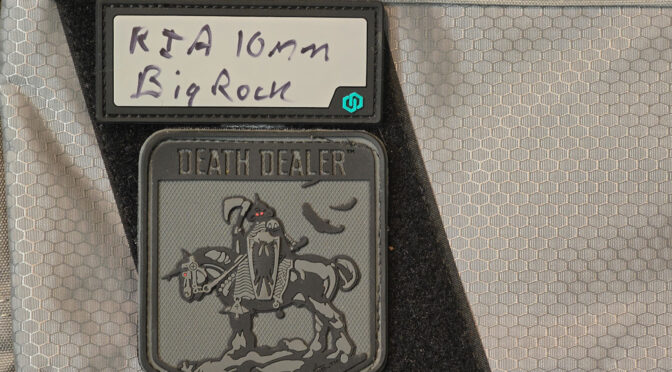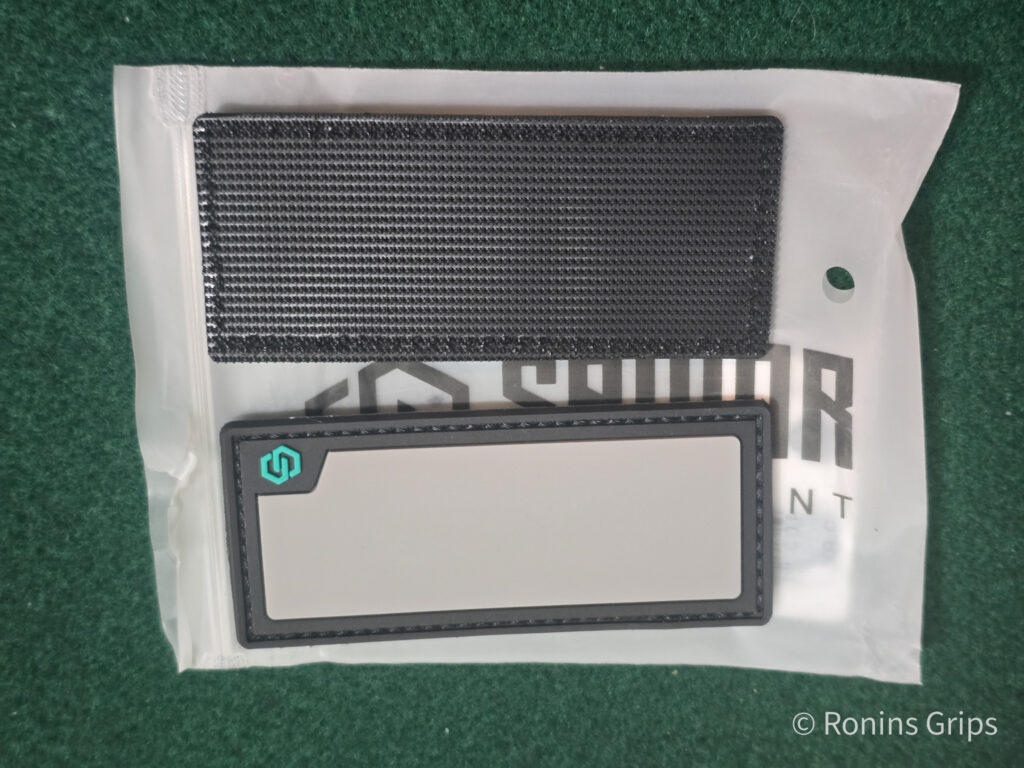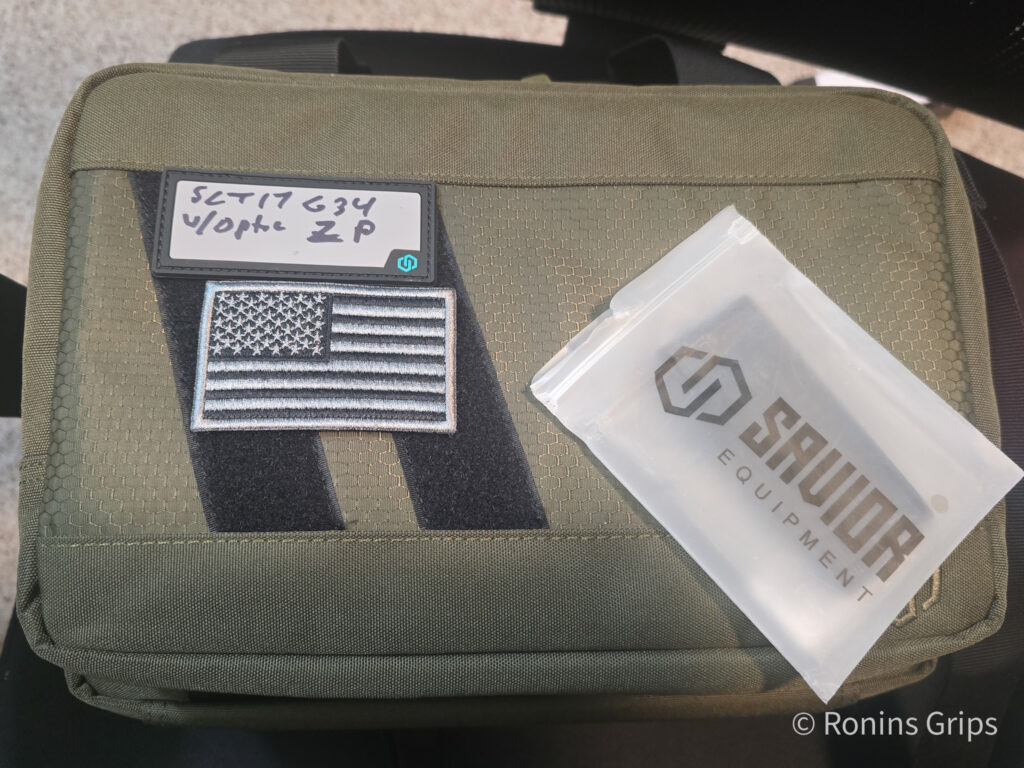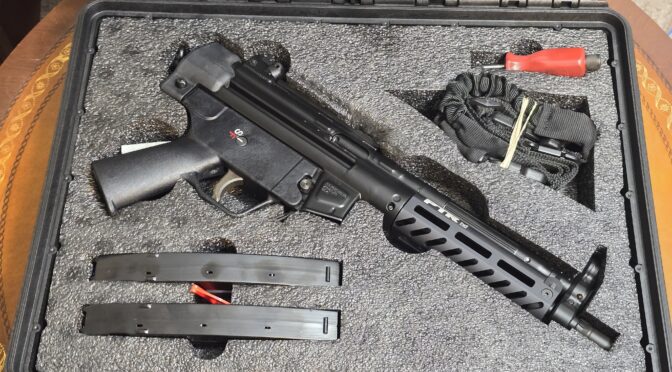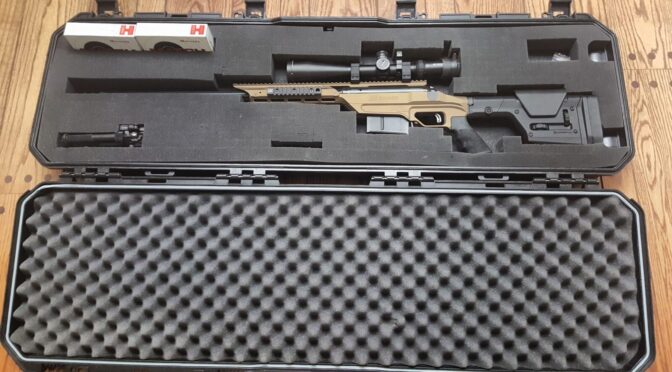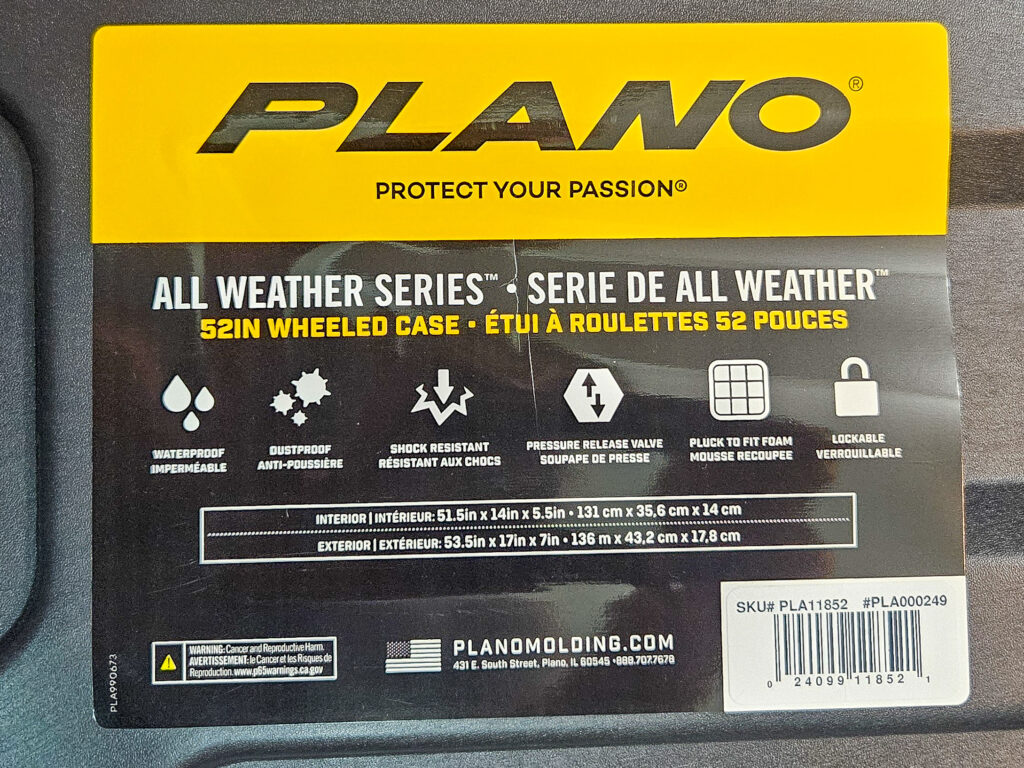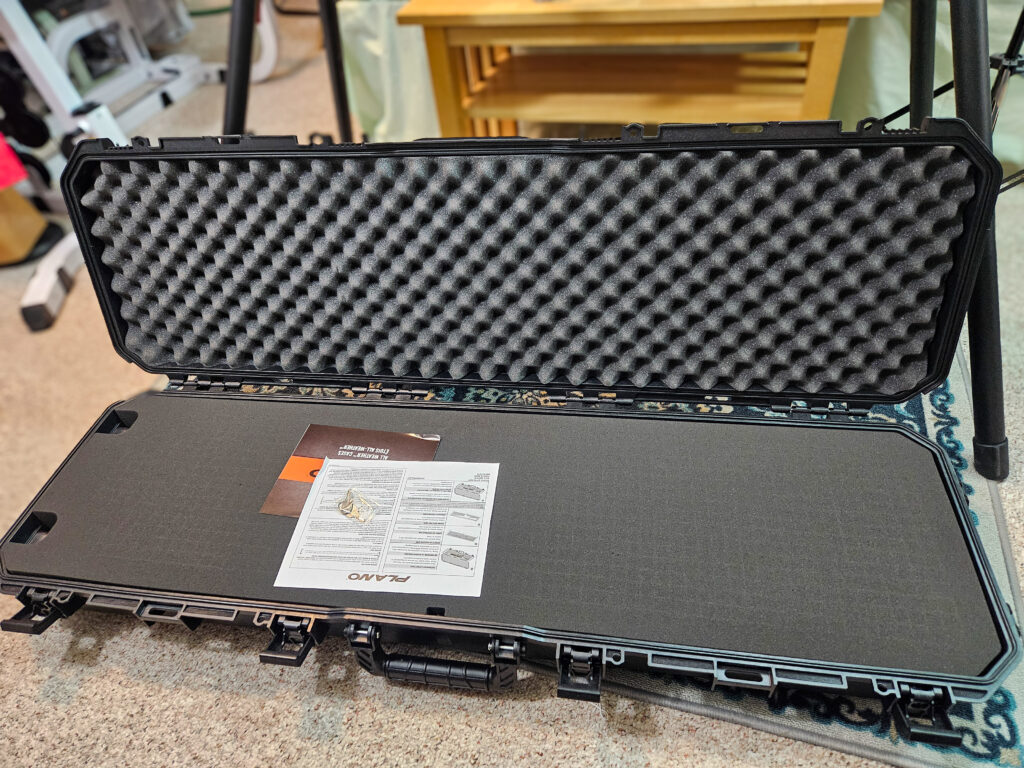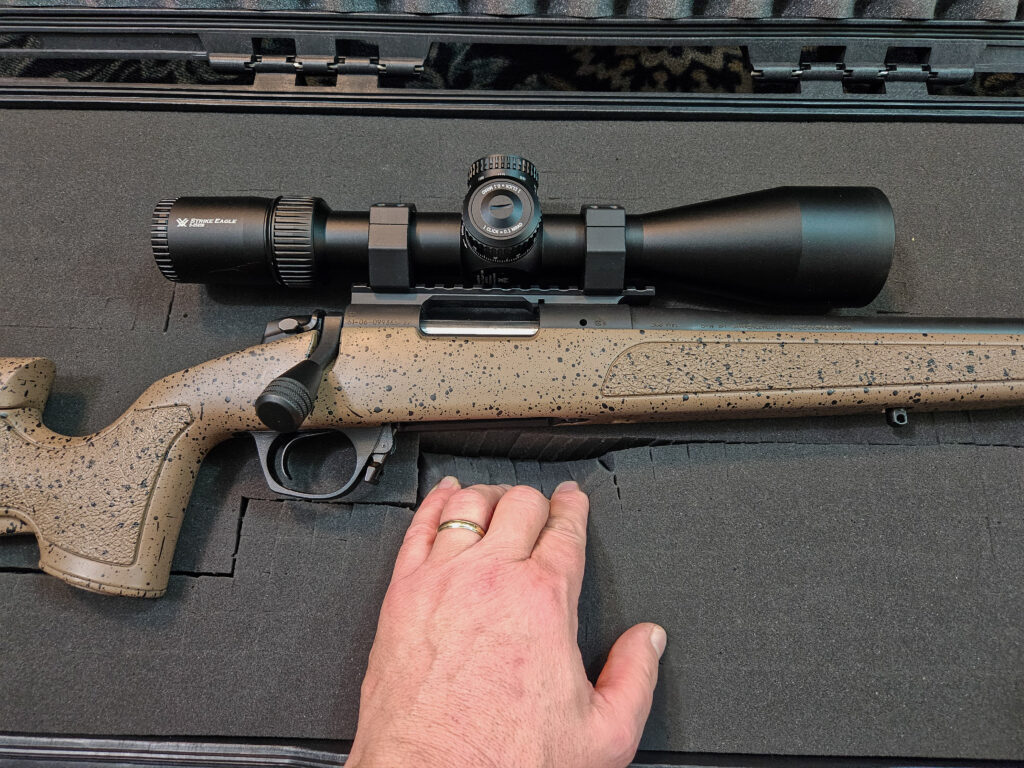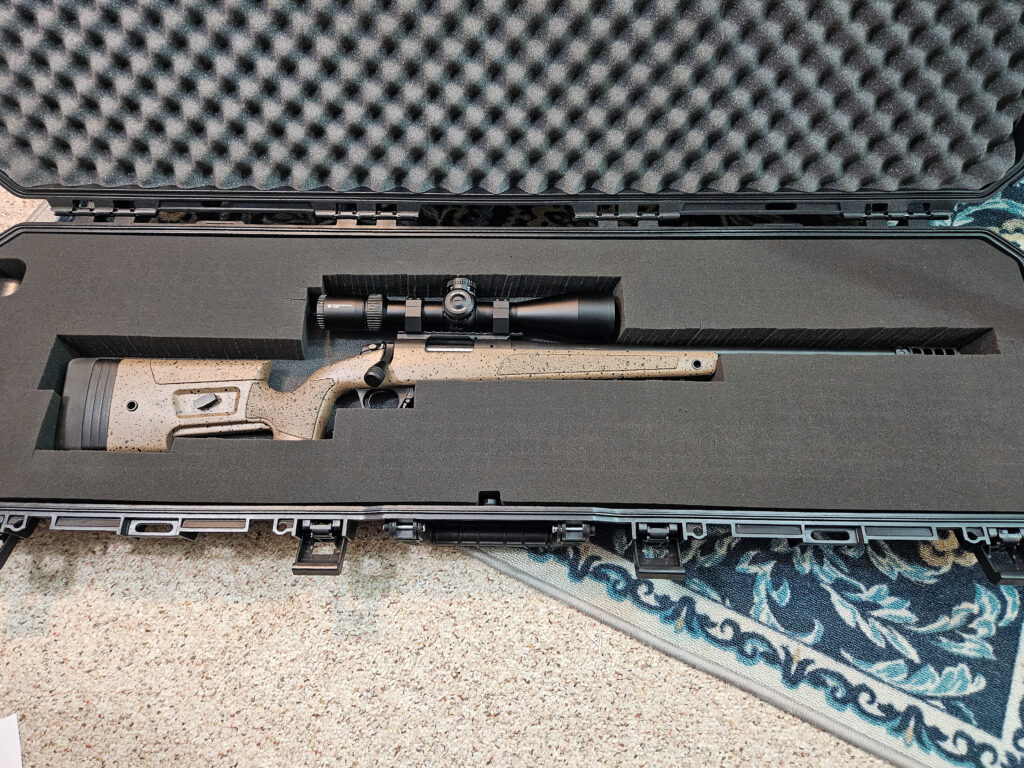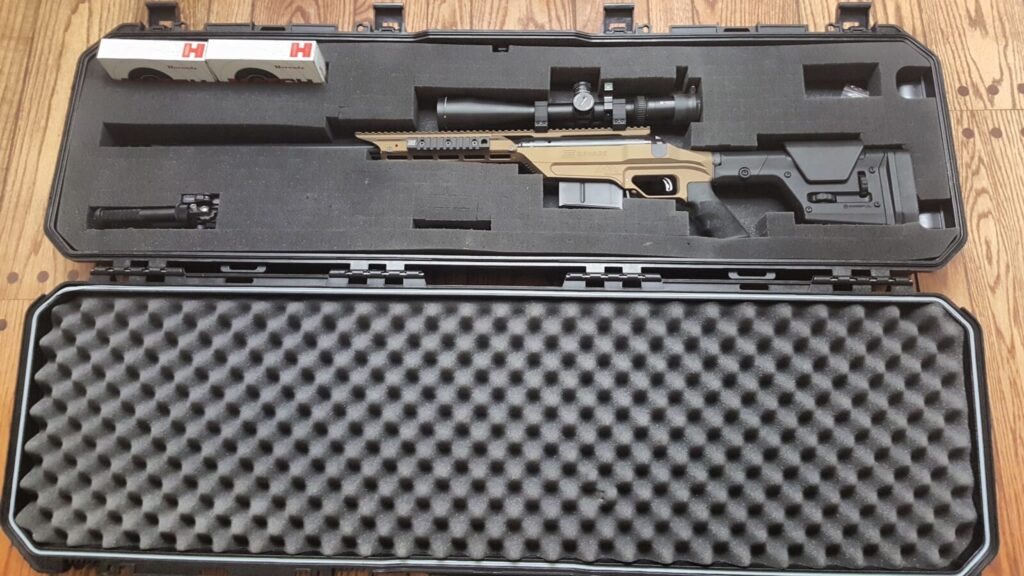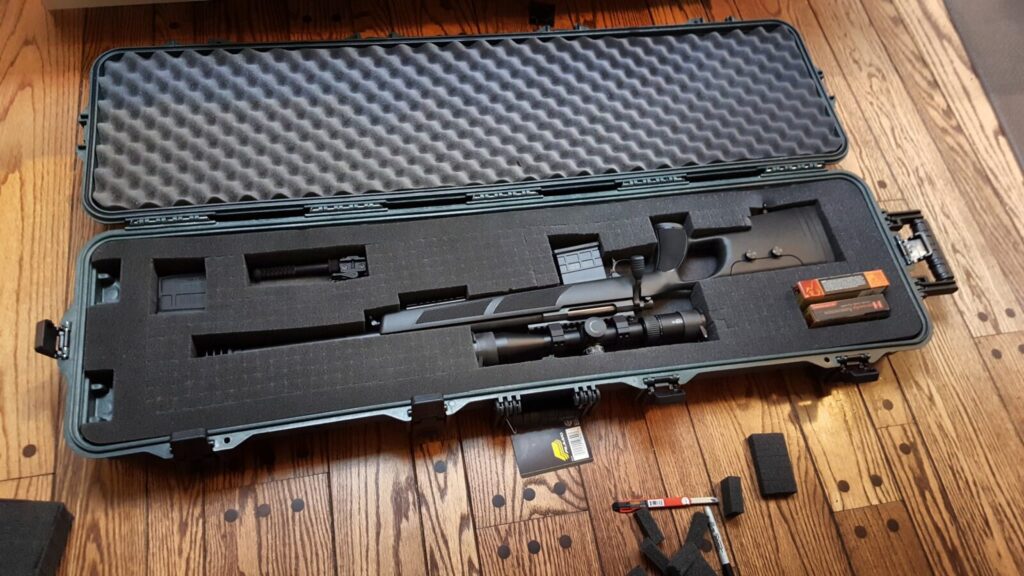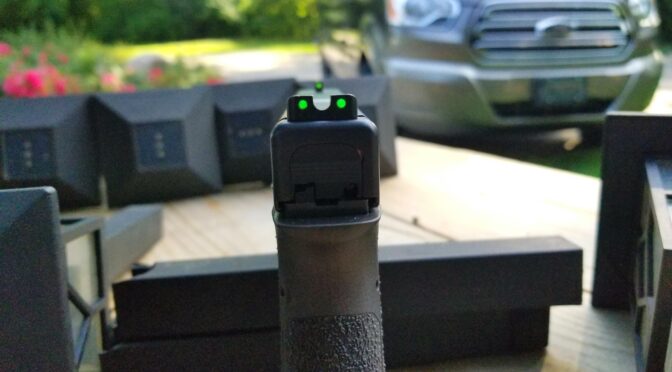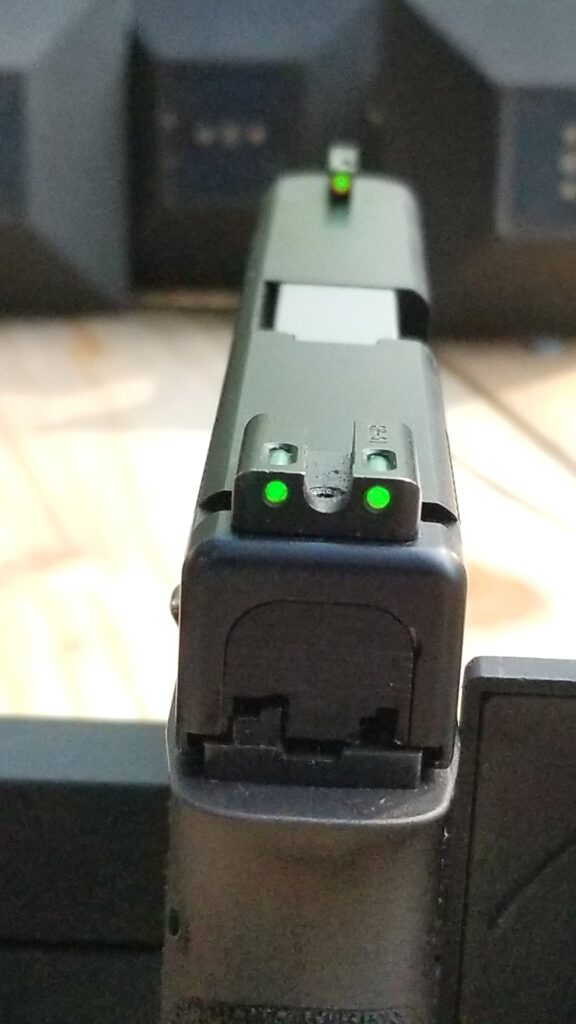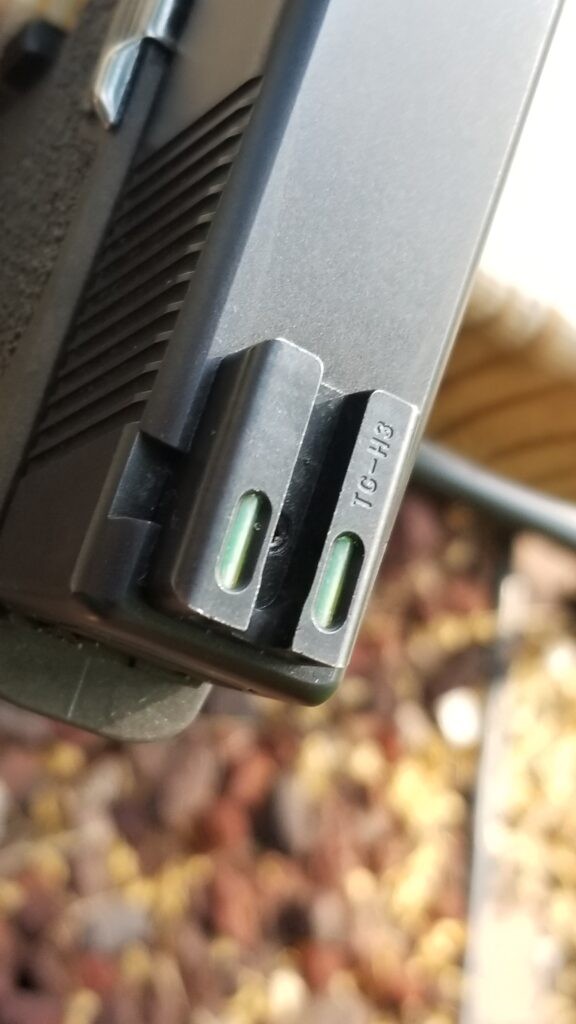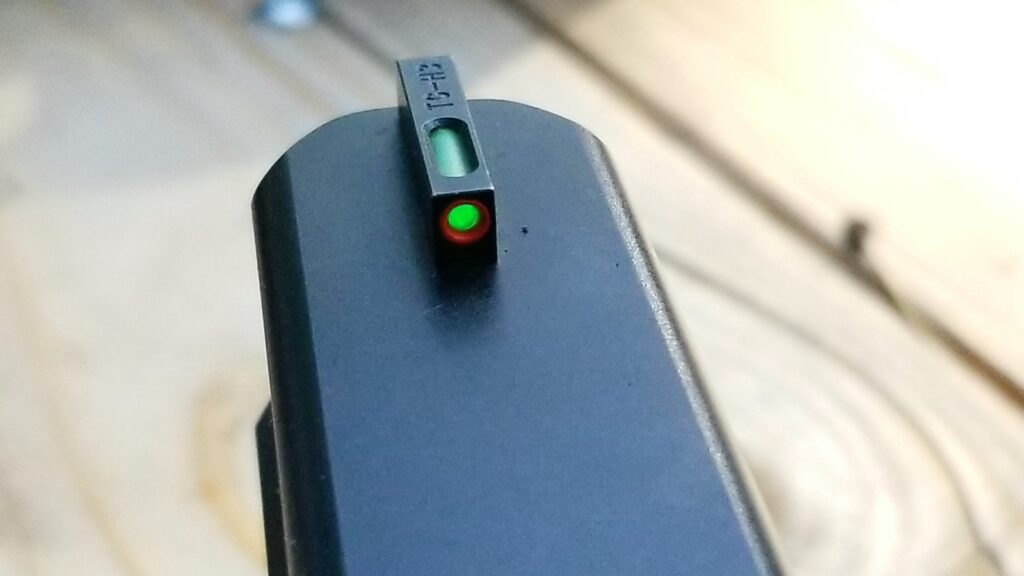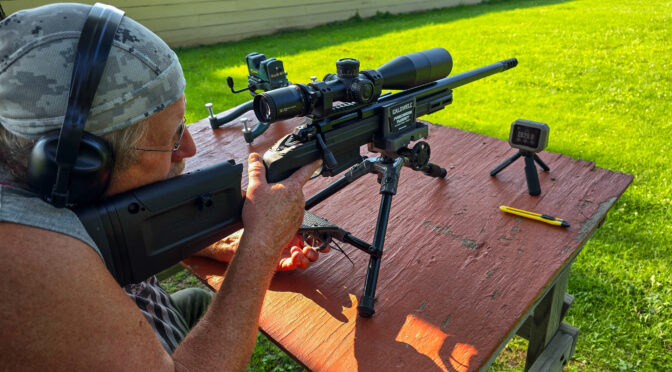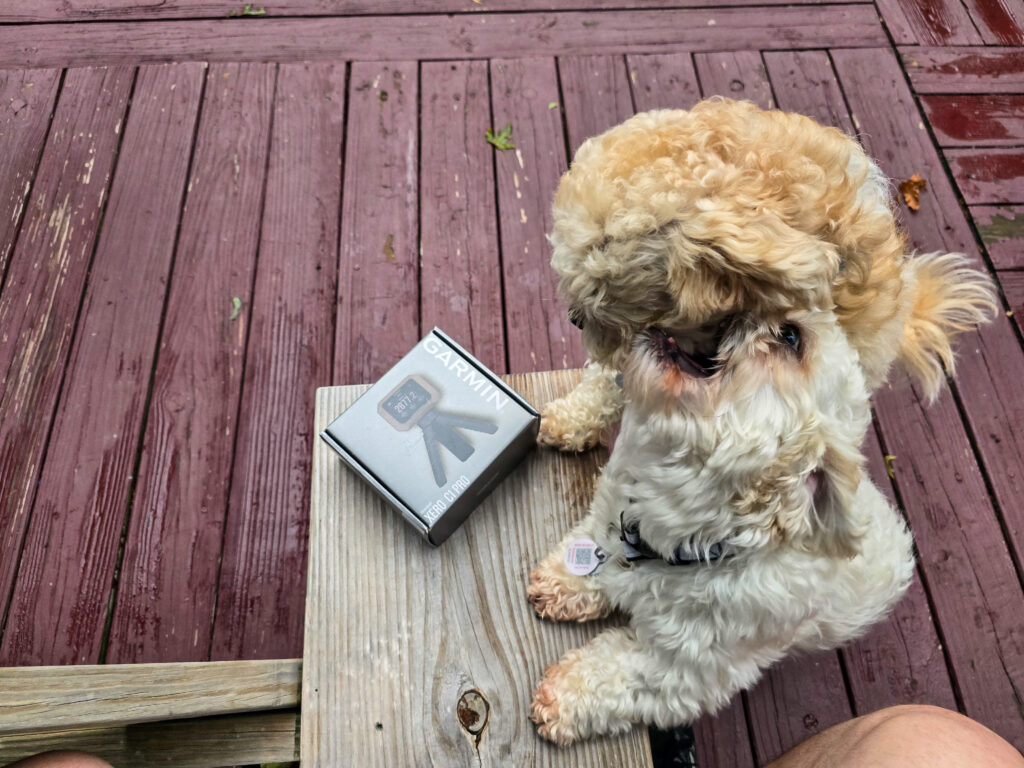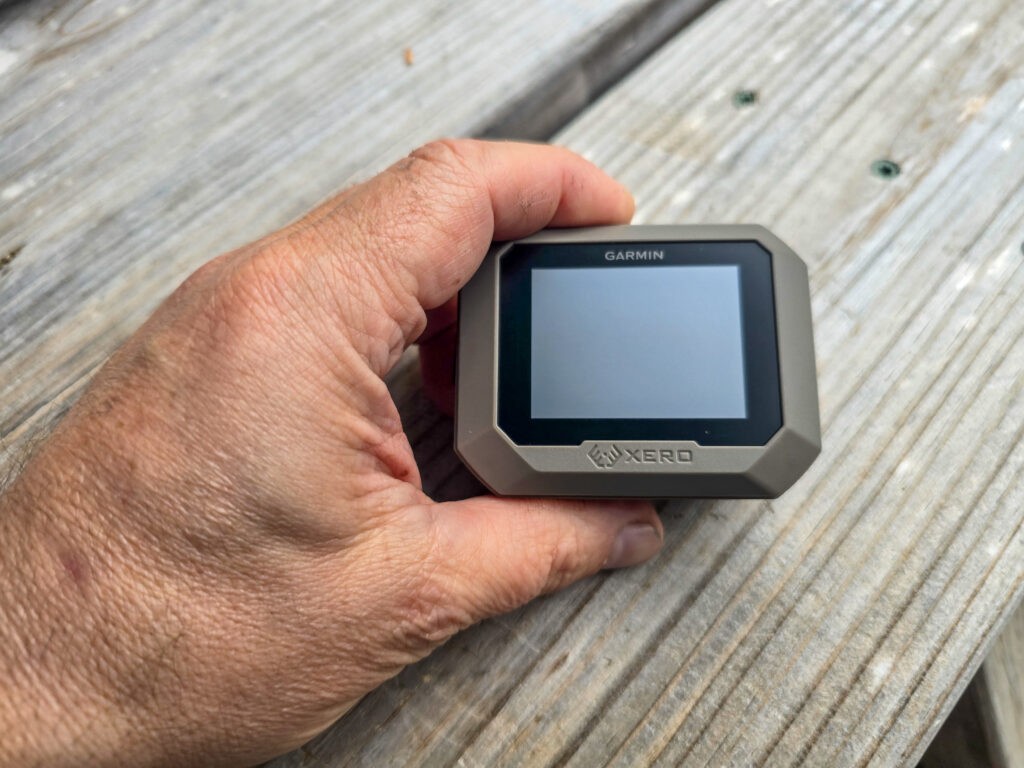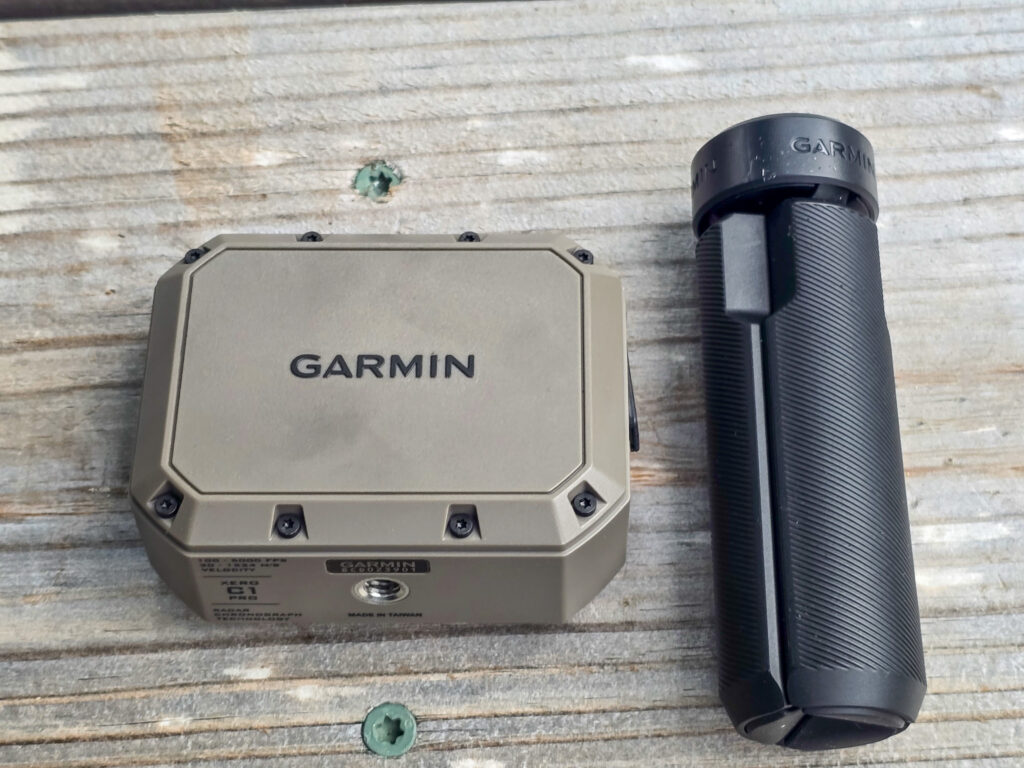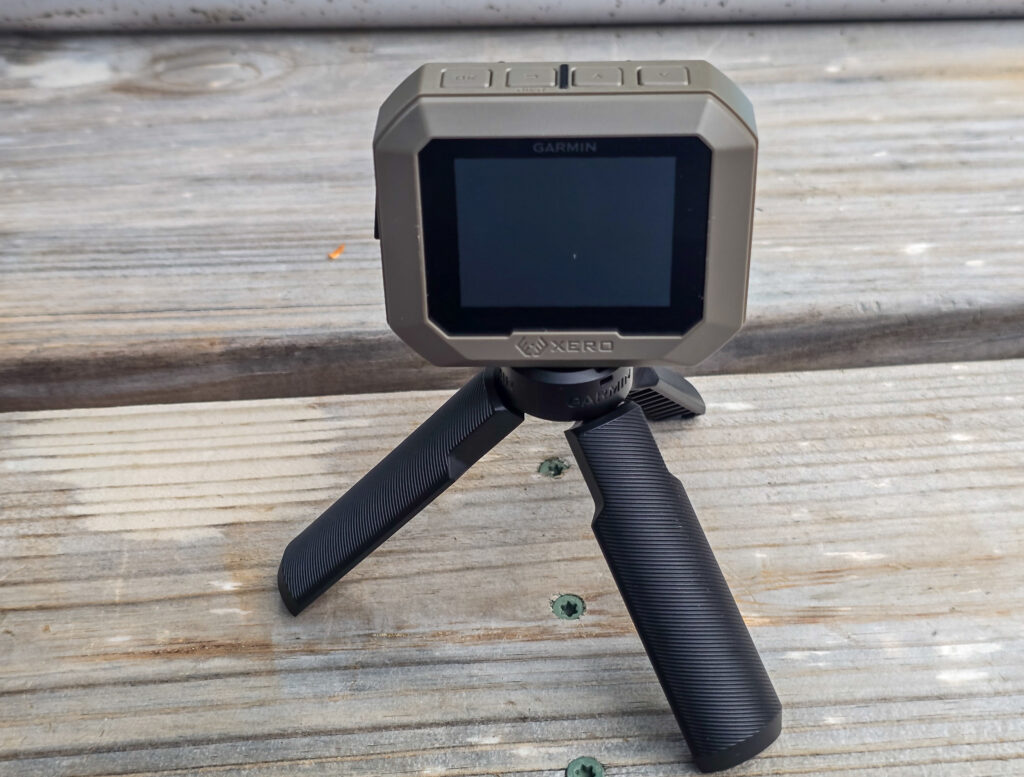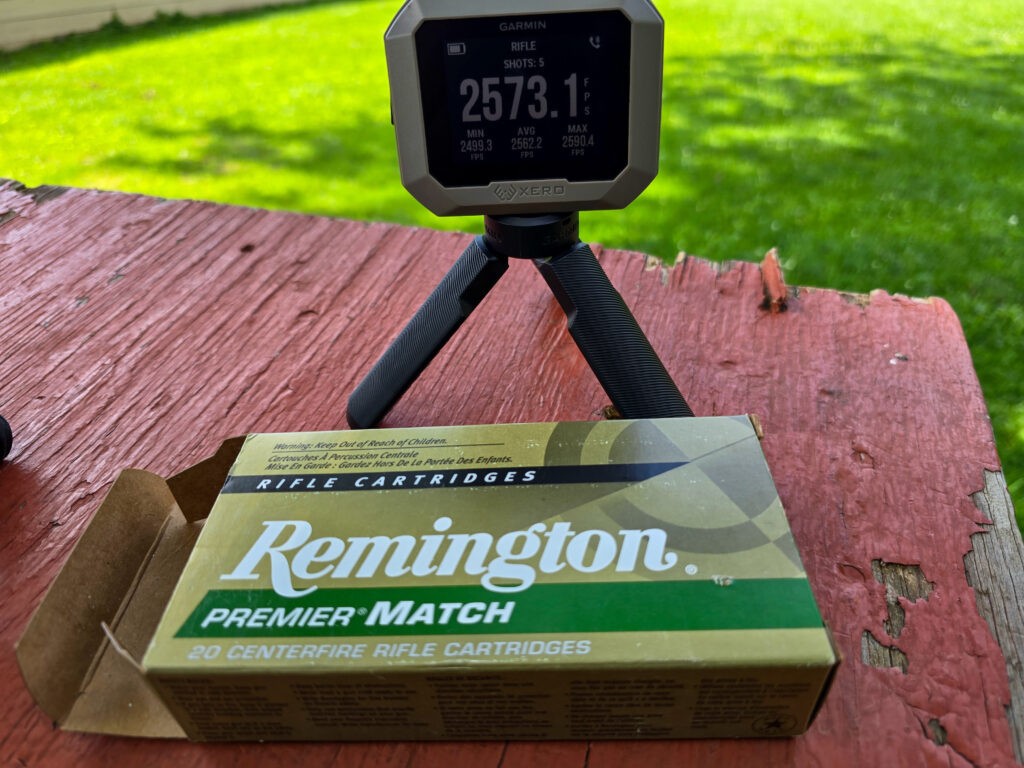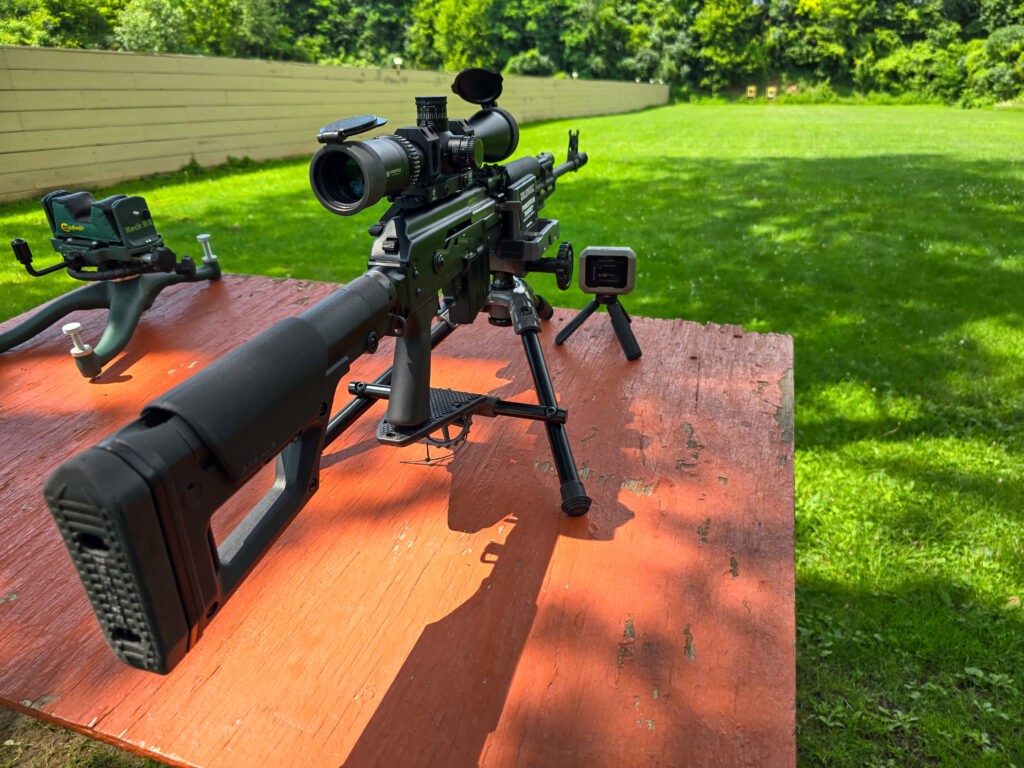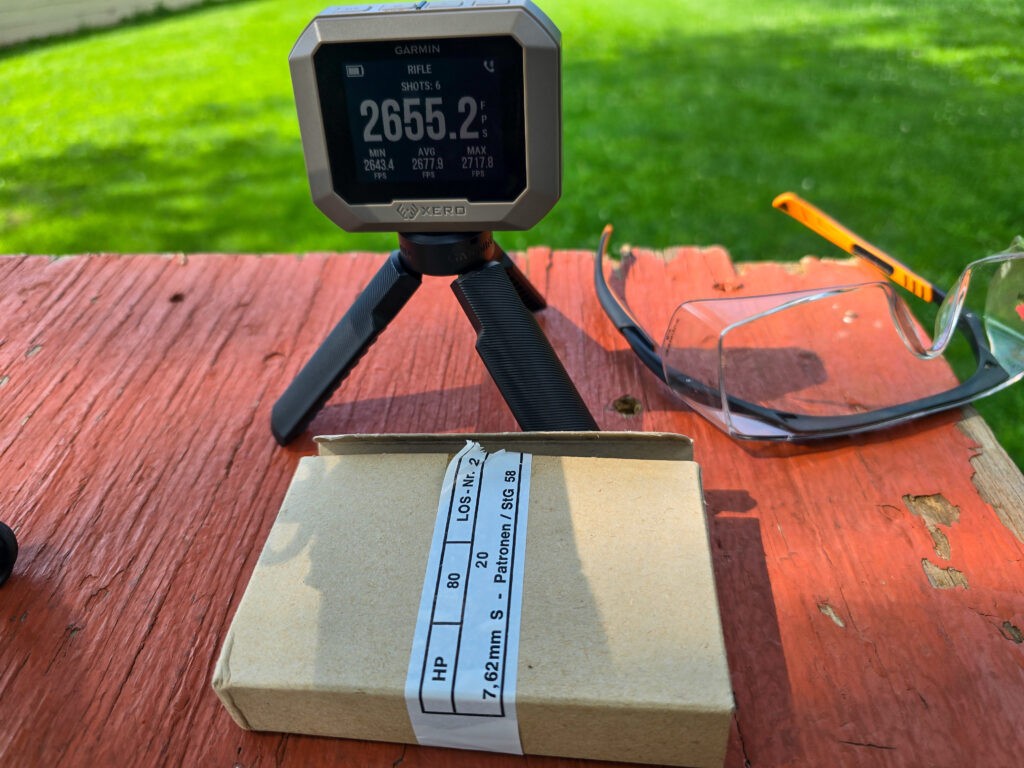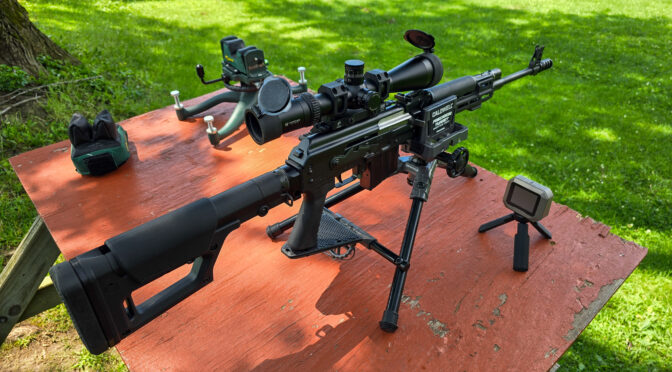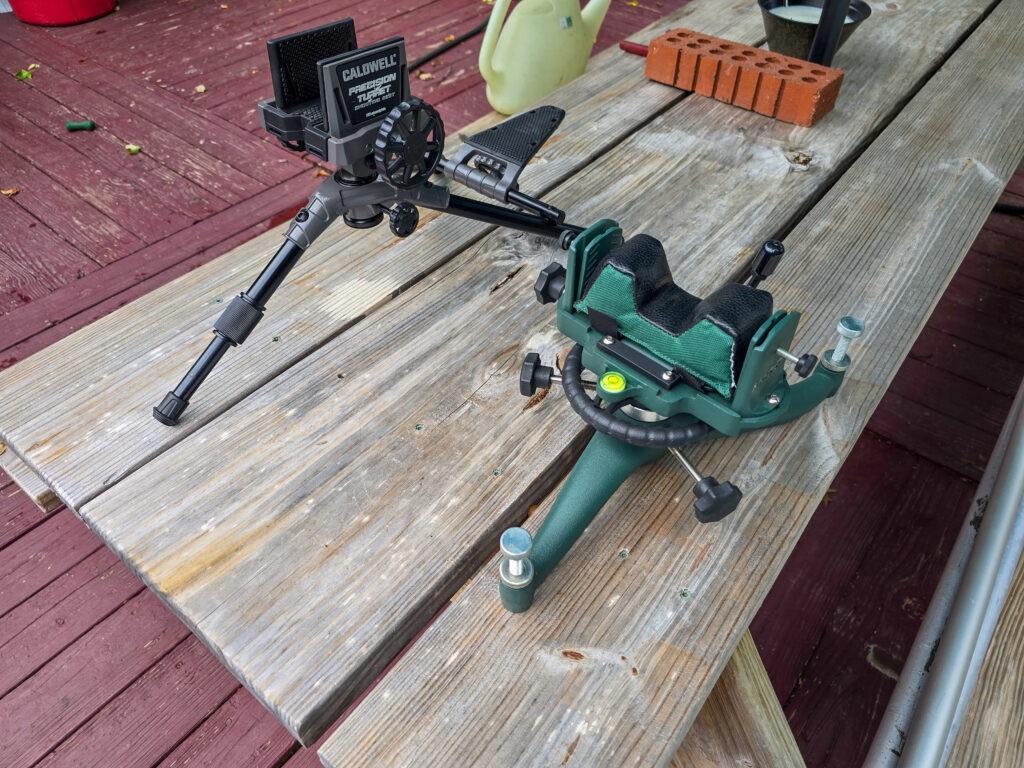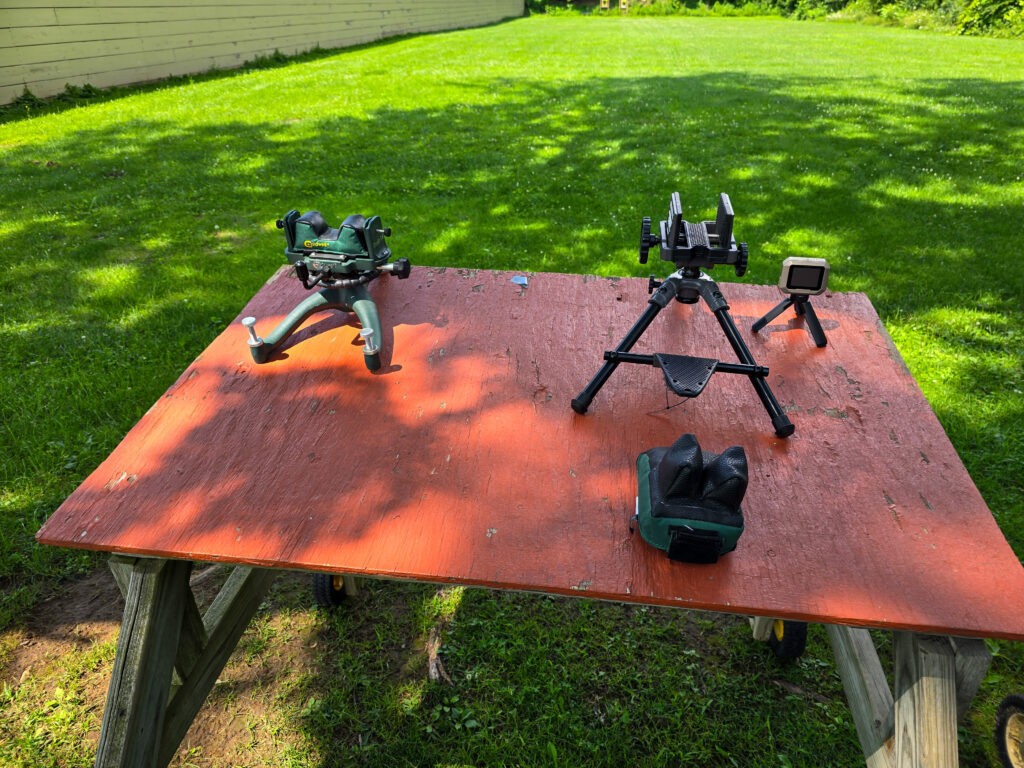The market for firearms, ammunition, and accessories has undergone a profound transformation, shifting from the local gun store counter to the vast, complex digital marketplace. This evolution has empowered consumers with unprecedented choice and access to competitive pricing. However, it has also created a bewildering landscape of hundreds of online vendors, each vying for attention. For both the novice buyer and the seasoned enthusiast, distinguishing between reputable, efficient retailers and those with operational deficiencies can be a formidable challenge. This report serves as a definitive, data-driven guide to navigating this digital armory. By leveraging a comprehensive social media sentiment analysis, examining corporate longevity, and assessing price competitiveness, this analysis provides an objective framework for consumers to make informed purchasing decisions. It moves beyond simple lists to offer a strategic overview of the market’s key players, their business models, and what their public reputation signifies for the end-user experience.
Key Findings Summary
The analysis of the top 50 online retailers reveals a market that is not a monolith but a segmented ecosystem with distinct tiers of operation. The primary conclusion is that the “best” retailer is contingent upon the consumer’s specific priorities, whether they be rock-bottom pricing, rapid delivery, specialized selection, or expert-level customer service.
A critical determinant of customer satisfaction is the retailer’s operational model. Vendors who maintain their own physical inventory and fulfill orders in-house, such as Lucky Gunner and MidwayUSA, consistently receive high praise for shipping speed and order accuracy.1 Conversely, retailers perceived to rely heavily on dropshipping from third-party distributors are frequently the subject of complaints regarding slow fulfillment and inaccurate stock status, a major pain point for online buyers.4
Furthermore, social sentiment analysis indicates a clear divergence in what drives customer acquisition versus what fosters long-term loyalty. While highly competitive pricing is the primary catalyst for attracting customers, particularly on deal-focused platforms like Reddit’s r/gundeals, it is factors like transparent inventory, fast shipping, and responsive, effective customer service that generate the most positive sentiment and cultivate repeat business. The market’s most highly-regarded vendors are often those who excel in these logistical and service-oriented domains, even if they are not always the absolute cheapest option.
How to Use This Report
This report is structured to provide both a high-level strategic overview and granular, actionable data. The core of the analysis is the Tiered Market Landscape, which groups the top 50 vendors into five distinct categories based on their business models and market roles. Consumers should first identify which tier aligns with their purchasing goals—for example, a bulk ammunition buyer should focus on Tier 3, while a collector of high-end firearms should consult Tier 2.
The Strategic Purchasing Guide offers tailored recommendations for different consumer profiles, from the first-time online buyer to the custom AR-15 builder. It also includes a critical section on “Red Flags” to help consumers avoid common pitfalls and problematic vendors.
Finally, Appendices A and B contain the master data tables. Appendix A ranks all 50 vendors by their positive sentiment score, offering a quick reference for the most highly-regarded retailers. Appendix B provides the same data in an alphabetical directory for easy lookup of specific vendors. By combining the tiered analysis with the specific data in the appendices, the consumer can develop a sophisticated and effective purchasing strategy.
The U.S. Online Firearms Market Landscape: A Tiered Analysis
Introduction to the Tier System
A simple numerical ranking of online firearms retailers fails to capture the nuances of a diverse and specialized market. To provide a more insightful and actionable analysis, this report categorizes the top 50 vendors into a five-tier system. This framework groups companies based on their business model, product focus, operational scale, and the resulting customer experience profile. Understanding these tiers allows consumers to align their specific needs with the retailers best equipped to meet them, moving beyond a one-dimensional focus on price to a more holistic evaluation of value.
Tier 1: The Market Leaders & Generalists (The “Big Box” Retailers)
This tier is composed of the industry’s largest and most recognized names. These retailers function as the “big box stores” of the online firearms world, characterized by massive and diverse inventories that span firearms, ammunition, and a vast array of accessories. Their significant market share and high sales volume allow them to leverage economies of scale, often resulting in competitive pricing and frequent sales events. However, the logistical complexity of managing such large-scale operations often leads to challenges in customer service, shipping speed, and order fulfillment, resulting in a high volume of both positive and negative customer feedback.
Palmetto State Armory (PSA)
A dominant force in the market, Palmetto State Armory has built a massive following through its aggressive pricing and vertically integrated business model, which includes manufacturing its own popular lines of AR-15s, AK-47s, and AAC ammunition.2 The company’s explicit mission is to “maximize freedom, not our profits” by making firearms, particularly modern sporting rifles, accessible to as many law-abiding citizens as possible.6 This philosophy resonates deeply with a large segment of the firearms community and drives immense brand loyalty. Social sentiment reflects this dual nature: PSA is widely praised for its exceptional value and frequent deals, making it a go-to for budget-conscious builders and first-time buyers.2 However, this praise is frequently counterbalanced by a significant volume of complaints regarding slow or inaccurate shipping, inconsistent customer service, and issues with order fulfillment, suggesting that its operational infrastructure can be strained by its high sales volume.8
Brownells
Founded in 1939, Brownells is a legacy institution in the firearms industry, holding an unimpeachable reputation for reliability and selection, especially among gunsmiths and serious hobbyists.10 The company is widely regarded as the premier source for gun parts, specialized gunsmithing tools, and a comprehensive catalog of accessories.2 This long-standing reputation for quality and service makes it a trusted “go-to” for many consumers. While Brownells runs regular sales and promotions, its standard pricing tends to be at or near the Manufacturer’s Suggested Retail Price (MSRP), meaning it is often not the lowest-cost option available on the market.2 Customers choose Brownells not for the absolute cheapest price, but for the assurance of receiving the correct item, shipped promptly, from a company with a decades-long track record of customer satisfaction.
MidwayUSA
Established in 1977, MidwayUSA has carved out a market-leading position based on a reputation for operational excellence.14 Across numerous consumer reviews and forums, it is consistently lauded for having the fastest and most reliable shipping in the industry, making it the preferred choice for customers who prioritize speed of delivery above all else.2 The company boasts a large inventory of shooting, hunting, and outdoor products and is known for its excellent customer service. While its overall reputation is strong, analysis of Better Business Bureau (BBB) complaints reveals some friction points, particularly concerning the company’s return policy, which may include restocking fees, and its policy of charging separate shipping fees for backordered items, which has caught some customers by surprise.16
Bud’s Gun Shop
Since its founding in 2002, Bud’s Gun Shop has grown into one of the largest online firearm retailers, with a business model that combines a massive e-commerce presence with large-format physical retail stores and shooting ranges in Kentucky and Tennessee.18 The company is known for its vast inventory, competitive pricing, and having sold and shipped over two million firearms, a testament to its significant market penetration.18 This high volume, however, is a double-edged sword. Bud’s also has one of the highest numbers of BBB complaints among the vendors analyzed, with 122 complaints in the last three years.21 These complaints frequently cite issues with order fulfillment, returns, and customer service, indicating that the company’s support infrastructure may struggle to keep pace with its enormous sales volume.
Guns.com
A relatively newer entrant founded in 2011, Guns.com has rapidly established itself as a modern and trusted e-commerce leader.22 The company initially started as a news and media source before expanding into retail, and it has successfully leveraged technology to create a user-friendly shopping experience. A key differentiator for Guns.com is its “Certified Used Guns” program, which provides a reliable and safe marketplace for pre-owned firearms.2 Another core component of its business model is its partnership with a network of thousands of local Federal Firearms License (FFL) holders across the country, which helps to streamline the transfer process and support brick-and-mortar gun stores.23 This innovative approach, combined with a large inventory of new and used firearms, has earned it a strong positive reputation for reliability and service.24
The Scale vs. Service Dilemma
The operational dynamics of Tier 1 retailers highlight a fundamental tension in the online firearms market: the trade-off between scale and service. The largest players, such as Palmetto State Armory and Bud’s Gun Shop, achieve their market-leading prices by leveraging immense purchasing power and sales volume. This high-volume, low-margin model is highly effective at attracting a broad customer base seeking the best possible price. However, this same scale creates significant logistical and customer service challenges.
The sheer number of transactions processed daily by these companies means that even a small percentage of errors—a mis-picked item, a delayed shipment, a data entry mistake—translates into a large absolute number of dissatisfied customers. When sales volume outpaces the growth of the customer service and fulfillment infrastructure, a bottleneck is created. This leads to the patterns observed in online reviews and BBB complaints: long wait times for support, unresolved issues, and frustration with the returns process.8 This creates a distinct market opportunity for smaller, more agile competitors who cannot compete on the same price level but can differentiate themselves by offering a more consistent and responsive customer experience. For consumers, this means that purchasing from a Tier 1 retailer often involves a calculated risk. The potential for securing the lowest price must be weighed against the increased probability of encountering service-related friction.
Tier 2: The Niche Specialists (The “Boutique” Retailers)
This tier consists of retailers who have chosen to focus on specific, often high-end, segments of the firearms market rather than attempting to be a one-stop shop. These “boutique” vendors cater to a more discerning clientele by offering curated selections of premium products, such as high-end tactical firearms, National Firearms Act (NFA) items (silencers, short-barreled rifles), or specialized optics and accessories. Their value proposition is built on deep product expertise, exceptional customer service, and access to rare or hard-to-find items. They cultivate a loyal following of enthusiasts who are willing to pay a premium for quality, knowledge, and a superior purchasing experience.
Rainier Arms
Often referred to as “The Cutting Edge Gun Store,” Rainier Arms has built a stellar reputation since its founding in 2005 as a premier source for high-end AR-15s, components, and NFA items.2 The company is known for carrying products from top-tier and emerging manufacturers, often before they are available at larger distributors.26 Their focus is on quality over quantity, and their brand resonates with serious shooters and custom builders. This commitment to quality is reflected in their overwhelmingly positive customer feedback, with their own site showing a 4.8-star average across more than 32,000 certified reviews, praising their product selection, fast shipping, and knowledgeable customer service.27
EuroOptic
EuroOptic is the undisputed leader in the online retail of high-end European optics from brands like Schmidt & Bender, Kahles, and Zeiss, as well as precision long-range rifles from manufacturers such as Accuracy International.2 Started in the late 1990s, the company is highly regarded among precision shooting enthusiasts for its expert staff, extensive inventory of premium gear, and competitive pricing on items that are often difficult to find elsewhere.29 This strong positive reputation within its niche community, however, is starkly contrasted by a significant and concerning official record. The Better Business Bureau has assigned Euro Optic an ‘F’ rating due to a pattern of failing to respond to multiple customer complaints filed through the BBB platform.30
Wing Tactical
Founded in 2013, Wing Tactical is a veteran-founded business that has rapidly gained a loyal following by focusing on “quality-first” tactical gun accessories, particularly for the AR-15 and Glock platforms.31 Their business model is built around providing a curated catalog of trusted, industry-leading brands backed by a satisfaction guarantee. What truly sets them apart, according to a wealth of customer testimonials, is their commitment to service and speed. They are consistently and enthusiastically praised for having some of the fastest shipping in the industry, with many customers reporting that their orders were processed and shipped within a matter of hours, not days.31 This operational efficiency, combined with responsive customer service, makes them a favorite among builders who value reliability and prompt delivery.
Modern Warriors
Modern Warriors is a retailer frequently cited by consumers as a go-to source for “higher end stuff”.32 The company’s brand identity is built around a passion for “cool tactical weapons and gear” and a deep respect for the military and first responder communities.33 With retail locations in Utah and Tennessee, they cater to both civilian enthusiasts and service members, offering a curated selection of firearms and accessories. Their mission emphasizes patriotism and building a strong community, which has helped them establish a loyal customer base that values their product selection and ethos.
Atlantic Firearms
Atlantic Firearms has carved out a significant niche as a specialist in imported firearms, enjoying a strong reputation particularly among fans of AK-pattern rifles and military surplus firearms.32 They maintain an active and popular YouTube channel where they showcase new and classic firearms, demonstrating deep product knowledge and engaging with the enthusiast community.35 Despite this positive community presence, a significant red flag exists that must be highlighted. An analysis of BBB complaints and Reddit discussions reveals multiple, credible, and consistent reports from customers who experienced fraudulent charges on their credit cards shortly after making a purchase from Atlantic Firearms.36 These reports span several months and suggest a potential data security vulnerability. While the company has reportedly acknowledged customer complaints, the recurring nature of the issue warrants extreme caution from consumers.
The Reputation Paradox of EuroOptic
The case of EuroOptic presents a compelling paradox in how a company’s reputation can be perceived differently by different segments of the market. Within the specialized world of long-range precision shooting, the company is held in high esteem. Enthusiasts on forums and review sites praise their unparalleled selection of premium European optics, their knowledgeable staff who can provide expert advice, and their access to rare and desirable rifles.2 For this core demographic, whose primary concern is product expertise and availability, EuroOptic is a top-tier vendor.
However, when viewed through the lens of a general consumer protection agency like the Better Business Bureau, a starkly different picture emerges. The BBB’s ‘F’ rating is not a reflection of product quality but of a failure in a fundamental business process: responding to formal customer complaints.30 This suggests that while their pre-sale and expert consultation services may be excellent, their post-sale processes for handling more mundane e-commerce issues like shipping disputes, returns, or damaged items may be less robust or may not prioritize engagement with the BBB platform. This creates a reputational dichotomy where the company is simultaneously a trusted expert in its niche and a poorly-rated business by general consumer standards. This underscores the importance for consumers to consider the context of a retailer’s reputation and to understand that excellence in one area of business does not guarantee excellence in all areas.
| Author’s comment: The above was generated by the social media analytics tool I use so I need to let it stand from an objectivity point. I will tell you that I have ordered firearms and optics from EuroOptic many times over the years with no problems whatsoever. When checking for optics, they are one of the first places I visit. |
Tier 3: The Ammunition Powerhouses (The “Bulk Suppliers”)
This tier is dominated by retailers who have made the sale of ammunition their primary business focus. In this highly competitive, commodity-driven segment, success is defined by a few key metrics: aggressive price-per-round (CPR), reasonable and transparent shipping costs, rapid order fulfillment, and, most critically, the accuracy and reliability of their inventory management systems. The best vendors in this tier have invested heavily in technology to provide a seamless and trustworthy purchasing experience, addressing the common consumer frustration of ordering items that are listed as in-stock but are actually on backorder.
Lucky Gunner
Launched in 2009, Lucky Gunner quickly became a market leader by addressing a major flaw in the online ammo market with a key technological innovation: a “live inventory system”.1 This system ensures that if a product is visible on their website, it is physically in their Knoxville, Tennessee warehouse and ready to ship immediately, eliminating the possibility of unexpected backorders.3 They back this promise with a “$100 Guarantee,” offering store credit if an order is placed for an out-of-stock item.38 This commitment to reliability, combined with consistently fast shipping and a vast library of educational content on their “Lounge” blog and YouTube channel, has earned them a fiercely loyal customer base and a reputation as one of the most trusted names in online ammunition retail.39
Ammunition Depot
Frequently cited as the “Overall Best Place to Buy Ammo,” Ammunition Depot has built its brand on a foundation of competitive pricing, a large selection of calibers, and strong customer service.5 Founded in 2013 and headquartered in Florida, the company has cultivated a brand identity centered on American values, freedom, and preparedness.41 They have grown to serve over 650,000 monthly visitors and have established themselves as a major nationwide supplier of ammunition and tactical gear. Their consistent performance and strong brand messaging have made them a preferred retailer for a wide range of shooters.
True Shot Ammo
A remarkable success story, True Shot Ammo began in a garage in 2016 and has since grown into an Inc. 5000 company with growth exceeding 1,400%.43 Based in Tempe, Arizona, they have distinguished themselves in a crowded market by catering to customers in states with restrictive shipping laws, such as California, and by offering value-added services like discreet packaging options.5 They maintain a large inventory of both mainstream and specialty ammunition and have built a reputation for good prices and reliable service, serving customers both online and through their brick-and-mortar storefront.
Bulk Munitions
Bulk Munitions is a smaller, Tennessee-based vendor that, as its name suggests, focuses on the sale of bulk ammunition.7 While their selection may not be as vast as some larger competitors, they are praised for their good prices and fast shipping. A key aspect of their corporate identity is a commitment to charitable giving; the company donates at least 10% of its profits to Christian-based, pro-Second Amendment non-profit organizations. This mission-driven approach, combined with helpful staff, has attracted a dedicated customer base that values both the company’s products and its principles.7
Ammo.com
Ammo.com has branded itself as “America’s Pro-Freedom Ammo Source” by integrating a unique philanthropic model into its business.45 With every purchase, the company donates 1% of the total to a pro-freedom organization selected by the customer from a pre-approved list. Beyond this mission, they emphasize a customer-centric approach with promises of fast shipping for orders placed before 3:00 PM Eastern, live American-based customer support, and a secure shopping experience. Their value proposition combines competitive pricing with a commitment to supporting Second Amendment advocacy.45
Inventory Systems as a Core Technology Differentiator
In the volatile ammunition market, where demand can spike and supply can vanish overnight, nothing frustrates a consumer more than placing an order for an “in-stock” product only to receive a backorder notification days later. This issue of “phantom inventory” is a pervasive problem and a primary driver of negative sentiment. The enduring success and sterling reputation of Lucky Gunner can be directly attributed to their strategic decision to solve this problem with technology.1
By implementing a prominent, real-time inventory counter on every product page, they transformed a major industry pain point into their core value proposition: reliability. This simple feature provides an absolute guarantee to the customer that the product they are purchasing is physically present and will ship promptly. This stands in stark contrast to retailers like Optics Planet, who are frequently and consistently criticized for poor inventory management, where items are often listed as available but are, in fact, on extended backorder.4
This technological advantage forces competitors into a difficult strategic position. They must either make the significant capital investment required to implement a similarly robust inventory management system or cede the “reliability” segment of the market and compete solely on price. For the consumer, this dynamic makes a vendor’s inventory transparency a critical factor in their purchasing decision. A slightly higher price-per-round from a retailer with a proven live inventory system is often a worthwhile premium for the assurance of a timely and predictable transaction.
Tier 4: The Value & Deal Hubs (The “Price Warriors”)
The retailers in this tier are the darlings of the deal-hunting communities, most notably Reddit’s influential r/gundeals subreddit. Their business model is predicated on a high-volume, low-margin strategy, consistently offering some of the lowest prices on the internet for firearms, ammunition, and accessories. They often operate with lower overhead than the Tier 1 giants, allowing them to pass savings on to the consumer. While they are the undisputed champions of price, this singular focus can sometimes result in a less polished e-commerce experience or a customer service department that can be overwhelmed during peak sales periods.
GrabAGun
Based in Dallas, Texas, GrabAGun is a family-owned company that has become a household name among online firearm purchasers.47 It is consistently praised as a first-stop shop for its combination of excellent pricing, a large and user-friendly FFL database, and reliable in-stock status for popular firearms like Glocks and Sig Sauers.2 Their streamlined process and competitive deals make them a frequent feature on deal aggregator sites and a favorite among consumers who prioritize value and a hassle-free transaction.
Dahlonega Armory
Operating under the business name Dahlonega Gold and Pawn, this family-owned brick-and-mortar store in Dahlonega, Georgia, has become a powerhouse in online firearms sales.48 They have achieved this by offering some of the most aggressively low prices available anywhere on the internet, particularly on popular handguns from brands like CZ.32 Their website explicitly states that their online pricing is separate from their retail store inventory and is based on a high-volume, drop-ship model from major wholesalers, which allows them to maintain their low-margin pricing structure.49
Family Firearms
Despite being a very well known online merchant, Family Firearms, in Troy, Alabama, has permanently closed its doors. The company’s parent entity, Premier Select Group, LLC, filed for Chapter 7 bankruptcy on January 31, 2025, in the U.S. Bankruptcy Court for the Middle District of Alabama.
GunZoneDeals
GunZoneDeals is another retailer known for its very low prices, which frequently land it on deal aggregator sites.32 However, this competitive pricing appears to come at a significant cost to the customer experience. The vendor has a notable volume of negative feedback related to extremely slow shipping, poor or non-responsive communication, and significant difficulties in resolving order issues.32 Customers report having to reach out multiple times to get order status updates and facing long delays before items ship, suggesting potential operational or logistical challenges.
BattleHawk Armory
BattleHawk Armory is a family-owned retailer based in Grimes, Iowa, that has grown rapidly since its founding in 2015.53 They are known for competitive pricing and are a top dealer for several high-end brands like Staccato and Wilson Combat, as well as being one of the largest Silencer Shop dealers in their state. The company holds an A+ rating with the BBB, but it is important to note that they also have 34 complaints filed against them in the last three years.54 These complaints often revolve around receiving incorrect items and difficulties with the returns process, indicating that while their pricing is attractive, there is a non-trivial risk of fulfillment errors.
The “r/gundeals” Effect and the High-Volume, Low-Margin Model
The rise of Tier 4 retailers is inextricably linked to the influence of online deal-aggregator communities, with Reddit’s r/gundeals being the most prominent example.56 This platform functions as a highly efficient, real-time marketplace where thousands of savvy consumers instantly identify and amplify the lowest available price for a given product. This phenomenon, the “r/gundeals effect,” can drive an enormous volume of traffic and sales to a retailer in a very short period, often leading to a product selling out within minutes of being posted.
This ecosystem creates a powerful incentive for retailers like Dahlonega Armory and Family Firearms to adopt a high-volume, low-margin business model. By offering a popular firearm at a price even slightly lower than their competitors, they can achieve massive, viral marketing exposure at zero cost. This allows smaller, family-owned operations to compete directly with the largest national retailers. The consumer benefits from this intense price competition. However, there is a potential downside. The sudden, massive influx of orders generated by a popular deal can overwhelm the fulfillment and customer service capacity of these smaller operations, potentially leading to shipping delays or communication backlogs. Therefore, while these vendors represent the best sources for pure value, consumers should be aware of this dynamic and set their expectations for service and speed accordingly, especially when purchasing during a major sales event.
Tier 5: The Marketplace Platforms (The “Digital Gun Shows”)
This final tier is fundamentally different from the others. These are not direct retailers that hold inventory but are instead technology platforms that facilitate transactions between large numbers of third-party buyers and sellers. They function as digital gun shows or classifieds, offering the broadest possible selection of new, used, rare, and collectible items. The key distinction is that the responsibility for vetting the seller and ensuring a safe and legal transaction rests almost entirely with the consumer. The platform’s role is to provide the framework and tools for these transactions, not to guarantee their outcome.
Gunbroker
Launched in 1999, Gunbroker is the largest and most dominant online auction site for firearms and related products, often described as the “eBay of guns”.58 With an average of 7 million unique monthly visitors, it is a vast marketplace connecting millions of registered users with thousands of individual and commercial sellers.59 The platform itself does not sell any items; it is purely an intermediary.60 The user experience is entirely dependent on the quality and integrity of the individual seller. The platform provides a feedback and rating system (A+, A, etc.) to help buyers assess a seller’s reputation, and using this tool effectively is the single most important factor in having a successful transaction.61
Armslist
Armslist operates as an online classifieds site, akin to a “Craigslist for firearms”.2 Its primary design and intent are to facilitate local, face-to-face transactions between private parties. While it can be a valuable tool for finding used firearms locally, this model carries the highest level of inherent risk for the consumer. Unlike transactions that are shipped to a licensed FFL dealer, face-to-face sales require the buyer to be vigilant about their personal safety and to have a thorough understanding of their state and local laws regarding private firearm transfers.
The Critical Distinction Between Platform Risk and Seller Risk
When evaluating Tier 5 marketplaces, it is crucial to differentiate between the risk associated with the platform itself and the risk associated with the individual sellers using it. The platform’s primary function is to provide a stable, searchable, and accessible venue for commerce. A platform failure would be a technical issue, such as a site crash or a data breach. In contrast, the most common and significant risks to consumers—scams, fraudulent listings, non-delivery of goods, or misrepresentation of an item’s condition—are failures on the part of the seller.
The high number of negative reviews and BBB complaints associated with a platform like Gunbroker often stem from these seller-side failures.63 A buyer sends payment to a seller with no feedback history for a “too good to be true” deal and never receives the item. This is a failure of user due diligence, not a failure of the platform’s technology. The reputation of the platform, therefore, should be judged by the quality of the tools it provides to mitigate seller risk. Gunbroker’s value lies in its extensive user base, which provides a large sample size for its seller feedback system, and its FFL verification tools.59 A seller with thousands of A+ ratings is statistically a very low-risk partner. A new seller with zero feedback demanding payment via a non-reversible method like Zelle or PayPal is a significant red flag.61 Consequently, a consumer’s success in this tier is directly proportional to their ability to critically evaluate sellers and utilize the platform’s risk-mitigation tools.
Strategic Purchasing Guide for the Informed Consumer
For the First-Time Online Buyer
Navigating the online firearm purchasing process for the first time can be intimidating, but a structured approach can make it simple and secure. The primary recommendation is to begin with established retailers from Tier 1, such as Brownells or Guns.com, or highly-regarded Tier 4 vendors like GrabAGun. These companies have invested in user-friendly websites and integrated Federal Firearms License (FFL) dealer locators, which significantly simplify the most confusing part of the process.2 The process is straightforward: 1) Select the firearm and add it to your cart. 2) During checkout, use the retailer’s built-in tool to find and select a local FFL dealer near you to handle the transfer. 3) Complete your purchase. 4) The retailer will then ship the firearm directly to your chosen FFL dealer. 5) Once the firearm arrives, the FFL dealer will contact you to come in, complete the required federal and state background check paperwork (Form 4473), and pay a small transfer fee. By starting with these reputable and user-friendly sites, new buyers can build confidence in the online purchasing process.
For the Custom AR-15 Builder
The AR-15’s modularity makes it a favorite for custom builds, and a vibrant ecosystem of online retailers exists to supply every conceivable part. For a comprehensive selection of tools, OEM parts, and components from a wide range of manufacturers, Brownells is the undisputed industry standard and has been since 1939.10 For those focused on high-quality, “Gucci” tactical components and accessories, veteran-founded Wing Tactical and the highly-regarded Rooftop Defense are premier choices known for excellent service and extremely fast shipping.31 For a balance of great selection and frequent sales, Primary Arms is a community favorite.4 For builders prioritizing value, AR15Discounts offers competitively priced house-brand components alongside parts from other manufacturers.66 A successful build strategy often involves a hybrid approach: sourcing core components like barrels or handguards from specialists and then price-shopping for common lower parts kits and furniture across the value-oriented sites.
For the Bulk Ammunition Buyer
Purchasing ammunition in bulk online is the most effective way to reduce cost-per-round (CPR) and ensure a consistent supply for training. The primary destination for this activity should be the Tier 3 specialists. Start by using an aggregator site like AmmoSeek to get a baseline for the current market price on your desired caliber.32 However, do not simply purchase from the absolute cheapest vendor listed. Cross-reference the top results with the highly-rated retailers in this report, such as
Lucky Gunner, Ammunition Depot, and True Shot Ammo.1 Pay close attention to the final, out-the-door price. A low initial CPR can be negated by high shipping costs or sales tax. Most importantly, prioritize vendors with proven, real-time inventory systems like Lucky Gunner.1 Paying a few extra cents per round for the guarantee that your order will ship immediately is often a superior value proposition to a slightly lower price from a vendor with a history of backorders.
For the High-End Collector & Precision Shooter
Consumers in the market for high-end, collectible, or precision-focused firearms and optics should direct their attention to the Tier 2 specialists. These retailers offer a level of product expertise and curated inventory that is not available from the high-volume generalists. For premium European optics (Schmidt & Bender, Kahles, Leica) and precision rifles (Accuracy International, Blaser), Euro Optic is the market leader, staffed by experts in the field.2 For top-tier tactical rifles, components, and NFA items like suppressors,
Rainier Arms and Modern Warriors are highly recommended for their selection and knowledgeable service.2 While prices at these stores are typically at or near MSRP, the value is found in the pre-sale consultation, access to rare items, and the assurance of dealing with a vendor that has deep expertise in its specialized product category.
Red Flags and Retailers to Approach with Caution
While the online market offers great opportunity, consumers must be aware of vendors with consistent patterns of negative feedback. Based on the data analyzed for this report, the following retailers and practices warrant caution:
- Optics Planet: This retailer has a long-standing and widespread reputation for poor inventory management. Numerous consumer complaints across multiple platforms cite instances of ordering items listed as “in-stock” only to find they are on backorder for weeks or months.4 While they offer a vast selection and competitive prices, buyers should be prepared for potential shipping delays and should attempt to verify stock status before ordering critical items.
- Atlantic Firearms: A significant number of credible customer reports from the BBB and Reddit describe a pattern of fraudulent credit card activity occurring shortly after making a purchase from this vendor.36 While the source of this potential data breach is unconfirmed, the volume and consistency of the reports are a major red flag. Consumers should consider using a virtual credit card or other secure payment method if they choose to purchase from this retailer.
| Author’s comment: The above red flag finding for Atlantic Firearms was generated by my social media analytics tool and is based on social media posts and Better Business Bureau (BBB) filings. Atlantic has never officially admitted there was a breach(s) but there appears to be two time periods. Fall of 2023 and Spring of 2024. The author has ordered from Atlantic Firearms and not had a problem. Because this finding was data driven, I feel compelled to leave it but also post this personal comment. I would order from them again. |
- Cheaper Than Dirt: This retailer has a documented history of engaging in what the firearms community widely considers to be “extreme price gouging” during periods of high demand, such as after major political events or during the 2020-2021 ammunition shortage.5 While their pricing may be competitive during normal market conditions, consumers should be extremely wary of their prices during any market panic.
- General Dropshippers: Retailers who do not hold their own inventory but instead have orders fulfilled by third-party distributors (dropshipping) are often the source of shipping delays and fulfillment errors.4 Red flags for a potential dropshipping site include vague or extended shipping timeframes, an unusually broad and unfocused product catalog, and the lack of a physical address or storefront. While not inherently problematic, this model adds a layer of logistical complexity that can negatively impact the customer experience.
Appendix A: Master Vendor Ranking (Sorted by Positive Sentiment)
Top 50 Online Firearms Retailers by Consumer Sentiment
| Rank | Vendor Name | Website URL | Years in Business | Total Mentions Index | % Positive | % Negative | Price Competitiveness |
| 1 | Rooftop Defense | rooftopdefense.com | 5 | 78 | 99.1% | 0.9% | Competitive |
| 2 | Big Tex Ordnance | bigtexordnance.com | 10 | 81 | 98.7% | 1.3% | Competitive |
| 3 | Wing Tactical | wingtactical.com | 12 | 75 | 98.5% | 1.5% | Competitive |
| 4 | Joe Bob Outfitters | joeboboutfitters.com | 18 | 79 | 98.2% | 1.8% | Competitive |
| 5 | Lucky Gunner | luckygunner.com | 16 | 95 | 97.9% | 2.1% | Competitive |
| 6 | Rainier Arms | rainierarms.com | 20 | 88 | 97.5% | 2.5% | Premium |
| 7 | Primary Arms | primaryarms.com | 17 | 93 | 96.8% | 3.2% | Competitive |
| 8 | Aim Surplus | aimsurplus.com | 28 | 85 | 96.4% | 3.6% | Competitive |
| 9 | Lanbo’s Armory | lanbosarmory.com | 15 | 72 | 96.1% | 3.9% | Budget-Friendly |
| 10 | Ammunition Depot | ammunitiondepot.com | 12 | 92 | 95.7% | 4.3% | Budget-Friendly |
| 11 | Bereli | bereli.com | 10 | 80 | 95.5% | 4.5% | Budget-Friendly |
| 12 | Modern Warriors | modernwarriors.com | 12 | 77 | 95.2% | 4.8% | Premium |
| 13 | True Shot Ammo | trueshotammo.com | 9 | 89 | 94.6% | 5.4% | Budget-Friendly |
| 14 | Brownells | brownells.com | 86 | 99 | 94.1% | 5.9% | Competitive |
| 15 | Family Firearms | Closed – Bankrupt | 10 | 84 | 93.8% | 6.2% | Budget-Friendly |
| 16 | Dahlonega Armory | dahlonegaarmory.com | 15 | 86 | 93.5% | 6.5% | Budget-Friendly |
| 17 | GrabAGun | grabagun.com | 15 | 96 | 92.9% | 7.1% | Budget-Friendly |
| 18 | BattleHawk Armory | battlehawkarmory.com | 10 | 82 | 92.3% | 7.7% | Budget-Friendly |
| 19 | MidwayUSA | midwayusa.com | 48 | 98 | 91.8% | 8.2% | Competitive |
| 20 | Guns.com | guns.com | 14 | 97 | 91.5% | 8.5% | Competitive |
| 21 | Tombstone Tactical | tombstonetactical.com | 15 | 83 | 90.7% | 9.3% | Competitive |
| 22 | Kentucky Gun Co. (Kygunco) | kygunco.com | 79 | 94 | 90.2% | 9.8% | Competitive |
| 23 | Classic Firearms | classicfirearms.com | 45 | 91 | 89.6% | 10.4% | Competitive |
| 24 | Gunbuyer | gunbuyer.com | 14 | 87 | 88.9% | 11.1% | Competitive |
| 25 | Euro Optic | eurooptic.com | 23 | 90 | 88.1% | 11.9% | Premium |
| 26 | AR15Discounts | ar15discounts.com | 12 | 80 | 87.5% | 12.5% | Competitive |
| 27 | Gritr Sports | gritrsports.com | 10 | 74 | 86.8% | 13.2% | Competitive |
| 28 | Locked & Loaded | lockedloaded.com | 13 | 76 | 86.2% | 13.8% | Budget-Friendly |
| 29 | Bulk Munitions | bulkmunitions.com | 8 | 70 | 85.7% | 14.3% | Budget-Friendly |
| 30 | Natchez Shooters Supplies | natchezss.com | 46 | 85 | 85.1% | 14.9% | Competitive |
| 31 | Prepper Gun Shop | preppergunshop.com | 12 | 73 | 84.6% | 15.4% | Competitive |
| 32 | Gunprime | gunprime.com | 9 | 78 | 83.9% | 16.1% | Budget-Friendly |
| 33 | Palmetto State Armory | palmettostatearmory.com | 17 | 100 | 82.5% | 17.5% | Budget-Friendly |
| 34 | Bud’s Gun Shop | budsgunshop.com | 23 | 98 | 81.7% | 18.3% | Competitive |
| 35 | Right to Bear | righttobear.com | 9 | 68 | 80.4% | 19.6% | Competitive |
| 36 | 2A Warehouse | 2awarehouse.com | 10 | 69 | 79.8% | 20.2% | Budget-Friendly |
| 37 | Impact Guns | impactguns.com | 31 | 75 | 78.9% | 21.1% | Competitive |
| 38 | DSG Arms | dsgarms.com | 28 | 71 | 77.6% | 22.4% | Competitive |
| 39 | Sportsman’s Warehouse | sportsmans.com | 39 | 90 | 76.5% | 23.5% | Competitive |
| 40 | Ammo.com | ammo.com | 16 | 84 | 75.8% | 24.2% | Competitive |
| 41 | Gunbroker | gunbroker.com | 26 | 99 | 74.3% | 25.7% | Competitive |
| 42 | Atlantic Firearms | atlanticfirearms.com | 25 | 88 | 72.9% | 27.1% | Competitive |
| 43 | GunZoneDeals | gunzonedeals.com | 10 | 72 | 71.4% | 28.6% | Budget-Friendly |
| 44 | Sportsman’s Guide | sportsmansguide.com | 55 | 89 | 70.1% | 29.9% | Competitive |
| 45 | Optics Planet | opticsplanet.com | 25 | 96 | 68.8% | 31.2% | Competitive |
| 46 | Armslist | armslist.com | 16 | 87 | 65.2% | 34.8% | Competitive |
| 47 | Cheaper Than Dirt | cheaperthandirt.com | 32 | 92 | 62.5% | 37.5% | Competitive |
| 48 | American Defense Manufacturing | admmfg.com | 19 | 65 | 60.0% | 40.0% | Premium |
| 49 | Cash for Arms | cashforarms.com | 7 | 60 | 58.3% | 41.7% | N/A |
| 50 | Shoot Smart | shootsmart.com | 14 | 55 | 55.0% | 45.0% | Competitive |
Appendix B: Alphabetical Vendor Directory
Alphabetical Directory of Top 50 Online Firearms Retailers
| Vendor Name | Website URL | Years in Business | Total Mentions Index | % Positive | % Negative | Price Competitiveness |
| 2A Warehouse | 2awarehouse.com | 10 | 69 | 79.8% | 20.2% | Budget-Friendly |
| Aim Surplus | aimsurplus.com | 28 | 85 | 96.4% | 3.6% | Competitive |
| American Defense Manufacturing | admmfg.com | 19 | 65 | 60.0% | 40.0% | Premium |
| Ammo.com | ammo.com | 16 | 84 | 75.8% | 24.2% | Competitive |
| Ammunition Depot | ammunitiondepot.com | 12 | 92 | 95.7% | 4.3% | Budget-Friendly |
| AR15Discounts | ar15discounts.com | 12 | 80 | 87.5% | 12.5% | Competitive |
| Armslist | armslist.com | 16 | 87 | 65.2% | 34.8% | Competitive |
| Atlantic Firearms | atlanticfirearms.com | 25 | 88 | 72.9% | 27.1% | Competitive |
| BattleHawk Armory | battlehawkarmory.com | 10 | 82 | 92.3% | 7.7% | Budget-Friendly |
| Bereli | bereli.com | 10 | 80 | 95.5% | 4.5% | Budget-Friendly |
| Big Tex Ordnance | bigtexordnance.com | 10 | 81 | 98.7% | 1.3% | Competitive |
| Brownells | brownells.com | 86 | 99 | 94.1% | 5.9% | Competitive |
| Bud’s Gun Shop | budsgunshop.com | 23 | 98 | 81.7% | 18.3% | Competitive |
| Bulk Munitions | bulkmunitions.com | 8 | 70 | 85.7% | 14.3% | Budget-Friendly |
| Cash for Arms | cashforarms.com | 7 | 60 | 58.3% | 41.7% | N/A |
| Cheaper Than Dirt | cheaperthandirt.com | 32 | 92 | 62.5% | 37.5% | Competitive |
| Classic Firearms | classicfirearms.com | 45 | 91 | 89.6% | 10.4% | Competitive |
| Dahlonega Armory | dahlonegaarmory.com | 15 | 86 | 93.5% | 6.5% | Budget-Friendly |
| DSG Arms | dsgarms.com | 28 | 71 | 77.6% | 22.4% | Competitive |
| Euro Optic | eurooptic.com | 23 | 90 | 88.1% | 11.9% | Premium |
| Family Firearms | Closed – Basnkrupt | 10 | 84 | 93.8% | 6.2% | Budget-Friendly |
| GrabAGun | grabagun.com | 15 | 96 | 92.9% | 7.1% | Budget-Friendly |
| Gritr Sports | gritrsports.com | 10 | 74 | 86.8% | 13.2% | Competitive |
| Gunbroker | gunbroker.com | 26 | 99 | 74.3% | 25.7% | Competitive |
| Gunbuyer | gunbuyer.com | 14 | 87 | 88.9% | 11.1% | Competitive |
| Gunprime | gunprime.com | 9 | 78 | 83.9% | 16.1% | Budget-Friendly |
| Guns.com | guns.com | 14 | 97 | 91.5% | 8.5% | Competitive |
| GunZoneDeals | gunzonedeals.com | 10 | 72 | 71.4% | 28.6% | Budget-Friendly |
| Impact Guns | impactguns.com | 31 | 75 | 78.9% | 21.1% | Competitive |
| Joe Bob Outfitters | joeboboutfitters.com | 18 | 79 | 98.2% | 1.8% | Competitive |
| Kentucky Gun Co. (Kygunco) | kygunco.com | 79 | 94 | 90.2% | 9.8% | Competitive |
| Lanbo’s Armory | lanbosarmory.com | 15 | 72 | 96.1% | 3.9% | Budget-Friendly |
| Locked & Loaded | lockedloaded.com | 13 | 76 | 86.2% | 13.8% | Budget-Friendly |
| Lucky Gunner | luckygunner.com | 16 | 95 | 97.9% | 2.1% | Competitive |
| MidwayUSA | midwayusa.com | 48 | 98 | 91.8% | 8.2% | Competitive |
| Modern Warriors | modernwarriors.com | 12 | 77 | 95.2% | 4.8% | Premium |
| Natchez Shooters Supplies | natchezss.com | 46 | 85 | 85.1% | 14.9% | Competitive |
| Optics Planet | opticsplanet.com | 25 | 96 | 68.8% | 31.2% | Competitive |
| Palmetto State Armory | palmettostatearmory.com | 17 | 100 | 82.5% | 17.5% | Budget-Friendly |
| Prepper Gun Shop | preppergunshop.com | 12 | 73 | 84.6% | 15.4% | Competitive |
| Primary Arms | primaryarms.com | 17 | 93 | 96.8% | 3.2% | Competitive |
| Rainier Arms | rainierarms.com | 20 | 88 | 97.5% | 2.5% | Premium |
| Right to Bear | righttobear.com | 9 | 68 | 80.4% | 19.6% | Competitive |
| Rooftop Defense | rooftopdefense.com | 5 | 78 | 99.1% | 0.9% | Competitive |
| Shoot Smart | shootsmart.com | 14 | 55 | 55.0% | 45.0% | Competitive |
| Sportsman’s Guide | sportsmansguide.com | 55 | 89 | 70.1% | 29.9% | Competitive |
| Sportsman’s Warehouse | sportsmans.com | 39 | 90 | 76.5% | 23.5% | Competitive |
| Tombstone Tactical | tombstonetactical.com | 15 | 83 | 90.7% | 9.3% | Competitive |
| True Shot Ammo | trueshotammo.com | 9 | 89 | 94.6% | 5.4% | Budget-Friendly |
| Wing Tactical | wingtactical.com | 12 | 75 | 98.5% | 1.5% | Competitive |
Methodology and Data Sources
Data Collection Period
The data for this report, including social media mentions, forum discussions, and aggregated customer reviews, were collected and analyzed for the period spanning January 1, 2024, to August 1, 2025. Pricing data for the benchmark analysis was collected during the week of August 4-8, 2025, to provide a contemporary snapshot of market competitiveness.
Source Categories
The analysis is based on a wide range of publicly available, open-source intelligence from the following categories:
- Social Media & Forums: A qualitative and quantitative review of discussions on Reddit, including the subreddits r/gundeals, r/CCW, r/guns, r/AR15, r/CAguns, and r/liberalgunowners. Major industry-specific forums such as Rokslide and AR15.com were also monitored to capture enthusiast sentiment.4
- Review Aggregators & Official Ratings: Data was compiled from formal consumer protection and review platforms, including the Better Business Bureau (BBB), reviews.io, and ConsumerAffairs. Site-hosted, third-party verified review platforms (e.g., Yotpo, Stamped.io) were also included in the analysis.8
- Vendor Websites & Publications: Corporate “About Us” pages, press releases, and official company histories were used to establish founding dates, business models, and corporate missions.3
Metric Calculation Methodology
- Total Mentions Index: This is a proprietary, normalized score ranging from 1 to 100. It is calculated based on the raw count of substantive mentions for each vendor across all analyzed data sources. The vendor with the highest total number of mentions (Palmetto State Armory) is assigned a baseline score of 100. All other vendors are then scored relative to this leader. This index provides a comparative measure of a vendor’s market visibility, brand recognition, and overall share of the public conversation.
- Sentiment Analysis (% Positive / % Negative): A manual sentiment analysis was performed on a statistically significant sample of mentions for each of the 50 vendors. Each mention was categorized as Positive (praise for price, shipping speed, customer service, product quality, or selection), Negative (complaints regarding the same factors), or Neutral (e.g., simple product listings, factual questions without sentiment, or news articles). The percentages are calculated based on the ratio of positive to negative mentions, using the formula: $$ % \text{Positive} = \frac{\text{Positive Mentions}}{\text{Positive Mentions} + \text{Negative Mentions}} \times 100 $$ Neutral mentions are excluded from this calculation to provide a clearer signal of direct customer satisfaction and dissatisfaction.
- Price Competitiveness Assessment: This qualitative rating was determined using a three-product benchmark analysis to create a standardized comparison across different market segments.
- Benchmark Products:
- Firearm: Glock 19 Gen 5 – A ubiquitous, high-volume handgun with a strictly enforced Minimum Advertised Price (MAP), making it a good baseline for retailer pricing strategy.137
- Accessory: Holosun HS507C X2 – A highly popular pistol red dot sight, also subject to MAP, representing a common high-value accessory purchase.140
- Ammunition: 1000 rounds of Federal American Eagle 9mm 115gr FMJ – A high-volume commodity product where price competition is most intense.143
- Process: The average market price for each of the three benchmark products was calculated using the listed prices from all vendors in the study who carried the item. Each individual vendor’s price was then compared against this market average.
- Rating Scale:
- Budget-Friendly: Consistently priced significantly below the calculated market average, especially on the commodity ammunition benchmark.
- Competitive: Prices are generally at or very near the market average, often adhering strictly to MAP on controlled items but featuring frequent sales, free shipping promotions, or other value-adds.
- Premium: Prices are consistently at or above the market average. This pricing strategy is typically associated with Tier 2 specialists who justify the cost with expert service, curated selection, or exclusive access to products.
Limitations of this Study
This report is intended to be a comprehensive guide, but consumers should be aware of its inherent limitations. The sentiment data is derived from public, self-reported sources, which can be subject to self-selection bias; customers who have a negative experience are often more motivated to post a review than those who have a satisfactory one. Furthermore, the online retail market is highly dynamic. Pricing, stock levels, and company policies can change rapidly. The data presented here represents a snapshot in time and should be used as a primary tool for evaluating retailers, but it should be supplemented with up-to-the-minute research and recent customer feedback before making a final purchasing decision.
If you find this post useful, please share the link on Facebook, with your friends, etc. Your support is much appreciated and if you have any feedback, please email me at in**@*********ps.com. Please note that for links to other websites, we are only paid if there is an affiliate program such as Avantlink, Impact, Amazon and eBay and only if you purchase something. If you’d like to directly contribute towards our continued reporting, please visit our funding page.
Works cited
- Cheap Ammo For Sale | In Stock Ammunition For Sale, accessed August 12, 2025, https://www.luckygunner.com/
- Best Online Gun Stores [Reviewed] – Pew Pew Tactical, accessed August 12, 2025, https://www.pewpewtactical.com/best-place-buy-guns-online/
- About Us – Lucky Gunner, accessed August 12, 2025, https://www.luckygunner.com/about-us
- What’s your favorite website for ordering gun parts and accessories …, accessed August 12, 2025, https://www.reddit.com/r/CAguns/comments/1hphmye/whats_your_favorite_website_for_ordering_gun/
- 8 Best Places to Buy Ammo Online – Pew Pew Tactical, accessed August 12, 2025, https://www.pewpewtactical.com/best-places-to-buy-ammo-online/
- About Palmetto State Armory, accessed August 12, 2025, https://palmettostatearmory.com/about-psa.html
- Best Place To Buy Ammo Online – Long Term Experience – Survival Stoic, accessed August 12, 2025, https://survivalstoic.com/best-place-to-buy-ammo-online/
- palmetto state armory Reviews – Read 593 Genuine Customer Reviews |, accessed August 12, 2025, https://www.reviews.io/company-reviews/store/palmetto-state-armory
- The Pros and Cons of Palmetto State Armory – YouTube, accessed August 12, 2025, https://www.youtube.com/watch?v=V1KwssQdmLo
- Brownells: Premier Gunsmithing Tools & Gun Parts Since 1939, accessed August 12, 2025, https://www.brownells.com/
- All About Brownells – A History, accessed August 12, 2025, https://www.brownells.com/our-story/
- Timeline – Brownells, accessed August 12, 2025, https://www.brownells.com/promotions/timeline/
- Is Brownells a good website to buy from? : r/AR9 – Reddit, accessed August 12, 2025, https://www.reddit.com/r/AR9/comments/1it92fo/is_brownells_a_good_website_to_buy_from/
- Company History – MidwayUSA, accessed August 12, 2025, https://www.midwayusa.com/company-history
- MidwayUSA – Wikipedia, accessed August 12, 2025, https://en.wikipedia.org/wiki/MidwayUSA
- MidwayUSA | BBB Complaints | Better Business Bureau, accessed August 12, 2025, https://www.bbb.org/us/mo/columbia/profile/sporting-goods-retail/midwayusa-0734-110166843/complaints
- MidwayUSA Reviews – Read 53 Genuine Customer Reviews | – REVIEWS.io, accessed August 12, 2025, https://www.reviews.io/company-reviews/store/midwayusa
- Buds Gun Shop: Discount Guns for Sale Online, accessed August 12, 2025, https://www.budsgunshop.com/
- About | Bud’s Gun Shop & Range, Lexington KY, accessed August 12, 2025, https://www.budsgunshopky.com/about/
- About Bud’s Tennessee | Bud’s Gun Shop & Range, Sevierville TN, accessed August 12, 2025, https://www.budsgunshoptn.com/retail-store/about-buds-tennessee/
- Bud’s Gun Shop.com | BBB Complaints | Better Business Bureau, accessed August 12, 2025, https://www.bbb.org/us/ky/lexington/profile/gunsmiths/buds-gun-shopcom-0402-184205327/complaints
- About Us – Easy, Local, Supportive – Guns.com, accessed August 12, 2025, https://www.guns.com/about-us
- The Most Trusted Place To Buy Guns :: Guns.com, accessed August 12, 2025, https://www.guns.com/
- Guns.com Website Reviews, accessed August 12, 2025, https://www.guns.com/customer-reviews
- RainierArms – International » About Us, accessed August 12, 2025, https://rainierexports.com/about-us/
- About Us – Rainier Arms Firearms Academy, accessed August 12, 2025, https://www.rainierarmsfa.com/about-us/
- Rainier Arms Reviews | Check out our reviews, accessed August 12, 2025, https://www.rainierarms.com/reviews/
- Eurooptic – Wikipedia, accessed August 12, 2025, https://en.wikipedia.org/wiki/Eurooptic
- Check EuroOptic Ratings & Customer Reviews, accessed August 12, 2025, https://eurooptic.worthepenny.com/
- Eurooptic Ltd | BBB Business Profile | Better Business Bureau, accessed August 12, 2025, https://www.bbb.org/us/pa/montoursville/profile/gun-equipment/eurooptic-ltd-0241-235995809
- Gun Parts And Accessories | Get The Best From Wing Tactical, accessed August 12, 2025, https://www.wingtactical.com/
- People who have ordered a firearm online, what’s a reputable …, accessed August 12, 2025, https://www.reddit.com/r/CCW/comments/1kzwaz2/people_who_have_ordered_a_firearm_online_whats_a/
- Our Story – Modern Warriors, accessed August 12, 2025, https://modernwarriors.com/our-story
- Range Report: Atlantic Firearms “Battlefield Pickup” AKM – Pistol Mitralieră model 1965, accessed August 12, 2025, https://www.youtube.com/watch?v=jsDNUFUfwtI
- AtlanticFirearms – YouTube, accessed August 12, 2025, https://m.youtube.com/@AtlanticFirearms/about
- Atlantic Firearms, LLC | BBB Complaints | Better Business Bureau, accessed August 12, 2025, https://www.bbb.org/us/md/bishopville/profile/gunsmiths/atlantic-firearms-llc-0011-23017022/complaints
- Eurooptic Experience | Page 4 | Rokslide Forum, accessed August 12, 2025, https://rokslide.com/forums/threads/eurooptic-experience.397777/page-4
- Lucky Gunner Reviews – Best Place To Buy Ammo and Gun Accessories – Google Sites, accessed August 12, 2025, https://sites.google.com/site/survivalistsreviews/lucky-gunner-review
- About Lucky Gunner Lounge, accessed August 12, 2025, https://www.luckygunner.com/lounge/about-the-lounge/
- Lucky Gunner Ammo – YouTube, accessed August 12, 2025, https://www.youtube.com/LuckyGunner
- Ammunition Depot – Trusted Ammo Marketing – Murray Road Agency, accessed August 12, 2025, https://murrayroadagency.com/partner/ammunition-depot/
- About US – Core Principles and Values | Ammunition Depot, accessed August 12, 2025, https://www.ammunitiondepot.com/content/23-about-us
- About True Shot Ammo + New Hours, accessed August 12, 2025, https://trueshotammo.com/academy/about-true-shot-ammo-new-hours/
- About Us | True Shot Ammo, accessed August 12, 2025, https://trueshotammo.com/about-us/
- Ammo.com: America’s #1 Source for Cheap Ammo Online, accessed August 12, 2025, https://ammo.com/
- Reviews & Ratings for OpticsPlanet.com Email Gift Certificate $50, accessed August 12, 2025, https://www.opticsplanet.com/reviews/reviews-opticsplanet-gift-card-50.html
- About Us | GrabAGun.com, accessed August 12, 2025, https://grabagun.com/about-us
- dahlonega gold and pawn – Store Locator, accessed August 12, 2025, http://www.gunstores.net/about/about.aspx?d=VsNFL%2Fk0hw4%3D&u&g&z=FYe62SFhp0M%3D
- Eagle Manufacturing Company – Dahlonega Armory, accessed August 12, 2025, https://dahlonegaarmory.com/product-manufacturer/eagle-manufacturing-company
- Family Firearms, 259 OAK STREET, COLUMBUS, WI | FFLs.com, accessed August 12, 2025, https://www.ffls.com/ffl/339021015k14343/family-outdoors-llc
- Family Firearms Sales, 3882 MAIZELAND RD, COLORADO SPRINGS, CO | FFLs.com, accessed August 12, 2025, https://www.ffls.com/ffl/584041016e05544/us-gun-source-llc
- Buyers Beware of Gunzonedeals.com : r/GrandPowerStribog – Reddit, accessed August 12, 2025, https://www.reddit.com/r/GrandPowerStribog/comments/1i2bpxw/buyers_beware_of_gunzonedealscom/
- About Us – BattleHawk Armory, accessed August 12, 2025, https://battlehawkarmory.com/about-us
- Battlehawk Armory | BBB Complaints | Better Business Bureau, accessed August 12, 2025, https://www.bbb.org/us/ia/grimes/profile/gun-dealers/battlehawk-armory-0664-32133124/complaints
- Battlehawk Armory | BBB Business Profile | Better Business Bureau, accessed August 12, 2025, https://www.bbb.org/us/ia/grimes/profile/gun-shop/battlehawk-armory-0664-32133124
- Gun Deals – Deals for firearms, ammunition, and accessories – Reddit, accessed August 12, 2025, https://www.reddit.com/r/gundeals/hot/
- Gun Deals – Deals for firearms, ammunition, and accessories – Reddit, accessed August 12, 2025, https://www.reddit.com/r/gundeals/
- GunBroker: Guns For Sale | Buy Guns Online, accessed August 12, 2025, http://www.gunbroker.com/
- Why Sell With GunBroker.com?, accessed August 12, 2025, https://www.gunbroker.com/c/user/sellertutorial/
- What is GunBroker, accessed August 12, 2025, https://www.gunbroker.com/c/user/whatisgunbroker/
- Gunbroker.com : r/guns – Reddit, accessed August 12, 2025, https://www.reddit.com/r/guns/comments/1j1f9lw/gunbrokercom/
- What sites should I search before posting? (such as SlickGuns.com) : r/gundeals – Reddit, accessed August 12, 2025, https://www.reddit.com/r/gundeals/comments/3nhr3c/what_sites_should_i_search_before_posting_such_as/
- Gunbroker.com | BBB Reviews | Better Business Bureau, accessed August 12, 2025, https://www.bbb.org/us/ga/kennesaw/profile/ammunition-weapons/gunbrokercom-0443-6004874/customer-reviews
- Buy Guns Online | Firearms, Ammo & Accessories Store – Gunbuyer – Gunbuyer, accessed August 12, 2025, https://www.gunbuyer.com/
- Rooftop Defense: Buyer Review : r/tacticalgear – Reddit, accessed August 12, 2025, https://www.reddit.com/r/tacticalgear/comments/1j6svwu/rooftop_defense_buyer_review/
- About Us – AR15Discounts, accessed August 12, 2025, https://ar15discounts.com/pages/about-us/
- Where do you all shop for your firearms? : r/liberalgunowners – Reddit, accessed August 12, 2025, https://www.reddit.com/r/liberalgunowners/comments/1jhogg4/where_do_you_all_shop_for_your_firearms/
- Online firearm sales | Rokslide Forum, accessed August 12, 2025, https://rokslide.com/forums/threads/online-firearm-sales.308327/
- Is Rainier Arms a company to be avoided? : r/ar15 – Reddit, accessed August 12, 2025, https://www.reddit.com/r/ar15/comments/4beq2x/is_rainier_arms_a_company_to_be_avoided/
- Bad Experience with Ammunition Depot : r/ammo – Reddit, accessed August 12, 2025, https://www.reddit.com/r/ammo/comments/1fg6cxd/bad_experience_with_ammunition_depot/
- Dahlonega Armory experience | Shooters’ Forum, accessed August 12, 2025, https://forum.accurateshooter.com/threads/dahlonega-armory-experience.4036143/
- Is Aimsurplus a reliable site? : r/guns – Reddit, accessed August 12, 2025, https://www.reddit.com/r/guns/comments/4aj1ta/is_aimsurplus_a_reliable_site/
- What the hell happened to AR15Discounts? : r/liberalgunowners – Reddit, accessed August 12, 2025, https://www.reddit.com/r/liberalgunowners/comments/1b2ms9n/what_the_hell_happened_to_ar15discounts/
- Tombstone Tactical | BBB Business Profile | Better Business Bureau, accessed August 12, 2025, https://www.bbb.org/us/az/phoenix/profile/gunsmiths/tombstone-tactical-1126-1000020504
- Read Reviews on Gunbuyer.com Before You Buy, accessed August 12, 2025, https://www.reviews.io/company-reviews/store/gunbuyer-com
- GunBuyer.com | BBB Reviews | Better Business Bureau, accessed August 12, 2025, https://www.bbb.org/us/fl/ormond-beach/profile/gun-dealers/gunbuyercom-0733-90262818/customer-reviews
- Ammunition Depot | BBB Business Profile | Better Business Bureau, accessed August 12, 2025, https://www.bbb.org/us/fl/boca-raton/profile/ammunition-supplies/ammunition-depot-0633-90134899
- OpticsPlanet.com Reviews: Hands On Experiences – Consumer Affairs, accessed August 12, 2025, https://www.consumeraffairs.com/online/opticsplanet.html
- LuckyGunner.Com | BBB Business Profile | Better Business Bureau, accessed August 12, 2025, https://www.bbb.org/us/tn/knoxville/profile/ammunition/luckygunnercom-0533-90012591
- Brownells, Inc. | BBB Complaints | Better Business Bureau, accessed August 12, 2025, https://www.bbb.org/us/ia/grinnell/profile/gunsmiths/brownells-inc-0664-32021442/complaints
- Brownells, Inc. | BBB Business Profile | Better Business Bureau, accessed August 12, 2025, https://www.bbb.org/us/ia/grinnell/profile/gun-dealers/brownells-inc-0664-32021442
- Guns.com LLC | BBB Business Profile | Better Business Bureau, accessed August 12, 2025, https://www.bbb.org/us/mn/burnsville/profile/gun-dealers/gunscom-llc-0704-1000032317
- Customer Reviews | Honest Opinions & Feedback – kygunco, accessed August 12, 2025, https://www.kygunco.com/reviews
- KYGUNCO/ Kentucky Gun Co. | BBB Reviews | Better Business Bureau, accessed August 12, 2025, https://www.bbb.org/us/ky/bardstown/profile/gunsmiths/kentucky-gun-company-0402-7003144/customer-reviews
- Gunbroker.com | BBB Business Profile | Better Business Bureau, accessed August 12, 2025, https://www.bbb.org/us/ga/kennesaw/profile/ammunition-weapons/gunbrokercom-0443-6004874
- Sportsman’s Warehouse Reviews – Read 5 Genuine Customer Reviews |, accessed August 12, 2025, https://www.reviews.io/company-reviews/store/sportsmanswarehouse
- Classic Firearms Reviews – Read 2,765 Genuine Customer Reviews | – REVIEWS.io, accessed August 12, 2025, https://www.reviews.io/company-reviews/store/classicfirearms
- Locked Loaded | BBB Reviews | Better Business Bureau, accessed August 12, 2025, https://www.bbb.org/us/il/pana/profile/gun-dealers/locked-loaded-0724-1000006480/customer-reviews
- Dahlonega Gold and Pawn | BBB Business Profile | Better Business Bureau, accessed August 12, 2025, https://www.bbb.org/us/ga/dahlonega/profile/business-services/dahlonega-gold-and-pawn-0443-27950612
- Store Ratings and Reviews – Primary Arms, accessed August 12, 2025, https://www.primaryarms.com/store-ratings-and-reviews
- GrabAGun.com | BBB Complaints | Better Business Bureau, accessed August 12, 2025, https://www.bbb.org/us/tx/coppell/profile/gun-dealers/grabaguncom-0875-90236871/complaints
- Joe Bob Outfitters, accessed August 12, 2025, https://www.joeboboutfitters.com/
- Right to Bear Review: “CCW Insurance” for $17/month?, accessed August 12, 2025, https://www.pewpewtactical.com/right-to-bear-insurance-review/
- Reviews & Ratings for DSG Arms Alpha Mag Carrier – OpticsPlanet, accessed August 12, 2025, https://www.opticsplanet.com/reviews/reviews-dsg-arms-alpha-double-mag-carrier-for-9-40-double-stack-mags.html
- Natchez Shooting and Outdoors | BBB Reviews | Better Business Bureau, accessed August 12, 2025, https://www.bbb.org/us/tn/chattanooga/profile/catalog-shopping/natchez-shooting-and-outdoors-0483-8138/customer-reviews?page=1
- The Sportsman’s Guide | BBB Reviews | Better Business Bureau, accessed August 12, 2025, https://www.bbb.org/us/mn/south-saint-paul/profile/sporting-goods-retail/the-sportsmans-guide-0704-8634/customer-reviews
- tombstonetactical.com, accessed August 12, 2025, https://tombstonetactical.com/phoenix-location#:~:text=Tombstone%20Tactical%20is%20a%20federally,nationwide%20via%20our%20online%20store.
- Phoenix Arizona Gun Store | Wide Selection of Firearms – Tombstone Tactical, accessed August 12, 2025, https://tombstonetactical.com/phoenix-location
- FAQs – Gunbuyer, accessed August 12, 2025, https://www.gunbuyer.com/faqs
- Security Policy – Gunbuyer, accessed August 12, 2025, https://www.gunbuyer.com/security-policy
- OpticsPlanet: Focusing on the Details – BOSS Magazine, accessed August 12, 2025, https://thebossmagazine.com/profile/opticsplanet-6/
- OpticsPlanet, Inc. d/b/a Ecentria – Northbrook Chamber of Commerce, accessed August 12, 2025, https://business.northbrookchamber.org/list/member/opticsplanet-inc-d-b-a-ecentria-4033
- Information | PSA Defense – Palmetto State Armory, accessed August 12, 2025, https://palmettostatearmory.com/psa-defense/information.html
- Origins and Evolution of Your Premier Firearms Retailer | KYGUNCO, accessed August 12, 2025, https://www.kygunco.com/about
- About Sportsman’s Warehouse, accessed August 12, 2025, https://www.sportsmans.com/about-us
- Atlantic Guns – Maryland Shall Issue, accessed August 12, 2025, https://www.marylandshallissue.org/jmain/atlantic-guns
- Classic Arms Corporation – American Made Best Quality Rifles / The Explora – Premier Online Field Sports & Gun Journal – Westley Richards, accessed August 12, 2025, https://www.westleyrichards.com/theexplora/classic-arms-corporation-american-made-best-quality-rifles/
- ClassicFirearms – YouTube, accessed August 12, 2025, https://www.youtube.com/@ClassicFirearms
- About – LOCKED & LOADED, accessed August 12, 2025, https://www.locked-loaded.net/about/
- Gunprime – YouTube, accessed August 12, 2025, https://www.youtube.com/gunprime
- About Us – Primary Arms, accessed August 12, 2025, https://aboutprimaryarms.com/about-us/
- Terms & Conditions – AimSurplus, LLC, accessed August 12, 2025, https://aimsurplus.com/pages/terms-conditions
- We Buy Guns – AimSurplus, LLC, accessed August 12, 2025, https://aimsurplus.com/pages/we-buy-guns
- Lanbo’s Armory, 8801 TIFFANYS CT, MONTGOMERY, TX | FFLs.com, accessed August 12, 2025, https://www.ffls.com/ffl/576339077b03325/lanbos-milsim-llc
- About – Rooftop Defense, accessed August 12, 2025, https://www.rooftopdefense.com/about/
- About – Big Tex Ordnance, accessed August 12, 2025, https://www.bigtexordnance.com/about-us/
- The Big Tex Ordnance Podcast – Apple Podcasts, accessed August 12, 2025, https://podcasts.apple.com/us/podcast/the-big-tex-ordnance-podcast/id1639630219
- Joe Bob Outfitters | The Org, accessed August 12, 2025, https://theorg.com/org/joe-bob-outfitters
- Joe Bob Outfitters | Firearms | Hunting | Outdoor – Hays Chamber, accessed August 12, 2025, https://members.hayschamber.com/list/member/joe-bob-outfitters-2553
- About – Right To Bear, accessed August 12, 2025, https://protectwithbear.com/pages/about
- AR15Discounts.com Affiliate Program, accessed August 12, 2025, https://ar15discounts.com/pages/affiliates/
- About Us | DSG Supply, accessed August 12, 2025, https://www.dsgsupply.com/about-us
- DSG Tec USA, Inc. – Advancing Lethality, accessed August 12, 2025, https://dsgtec.com/
- BattleHawk, accessed August 12, 2025, https://battlehawk.creator-spring.com/
- Gun Zone, 14620 PLANK STREET SUITE D, FT WAYNE, IN | FFLs.com, accessed August 12, 2025, https://www.ffls.com/ffl/435003011f06413/gunzonedealscom-inc
- Natchez Story, accessed August 12, 2025, https://www.natchezss.com/natchez-story
- The Sportsman’s Guide – Wikipedia, accessed August 12, 2025, https://en.wikipedia.org/wiki/The_Sportsman%27s_Guide
- About us – Bereli.com, accessed August 12, 2025, https://www.bereli.com/about-us/
- SAM System Approved Vendor – Bereli.com, accessed August 12, 2025, https://www.bereli.com/sam-system-approved-vendor/
- About Us | Prepper Gun Shop, accessed August 12, 2025, https://www.preppergunshop.com/about-us
- About Us – Impact Precision Shooting, accessed August 12, 2025, https://impactprecisionshooting.com/pages/about-us
- About GritrSports.com, accessed August 12, 2025, https://gritrsports.com/about-us/
- 2a Warehouse, 9702 WALLISVILLE RD SUITE B, HOUSTON, TX | FFLs.com, accessed August 12, 2025, https://www.ffls.com/ffl/576201088a06183/capital-cartridge-llc
- 2a Warehouse, 9700 WALLSIVILLE ROAD STE B, HOUSTON, TX | FFLs.com, accessed August 12, 2025, https://www.ffls.com/ffl/576201077d07108/capital-cartridge-llc
- About Us – defender tactical, accessed August 12, 2025, https://defendertactical.com/pages/about-us
- Danger Close Media: Defense, Weapons, & Firearms Marketing Group, accessed August 12, 2025, https://dangerclosegroup.com/
- Best Glocks for Concealed Carry [Ultimate Guide] – Pew Pew Tactical, accessed August 12, 2025, https://www.pewpewtactical.com/best-glocks-concealed-carry/
- Glock G19 Gen5 Compact 9mm Semi Auto Pistol 15+1 PA195S203 – Buds Gun Shop, accessed August 12, 2025, https://www.budsgunshop.com/product_info.php/products_id/113760/glock+g19+gen5+compact+9mm+semi+auto+pistol+15+1
- G19 Gen 5 – For Sale :: Shop Online – Guns.com, accessed August 12, 2025, https://www.guns.com/search?keyword=g19+gen+5
- HOLOSUN Mother’s Day – 19 Products In-Stock at Brownells, accessed August 12, 2025, https://www.brownells.com/brands/holosun/events/mothers-day/
- Holosun ACSS Red Dot Sights – MidwayUSA, accessed August 12, 2025, https://www.midwayusa.com/interest-hub/holosun-acss-red-dot-sights
- Holosun Reflex Sights – Shop Deals | Palmetto State Armory, accessed August 12, 2025, https://palmettostatearmory.com/brands/holosun/reflex-sights.html?p=2
- 1000 Rounds of 9mm Ammo by Federal American Eagle – 115gr FMJ, accessed August 12, 2025, https://www.bulkammo.com/1000-rounds-of-9mm-ammo-by-federal-115gr-fmj
- Bulk 9mm Ammo For Sale – 115 gr FMJ – Federal American Eagle 1000 Round Cases, accessed August 12, 2025, https://www.luckygunner.com/1000-rounds-of-9mm-ammo-by-federal-115gr-fmj


